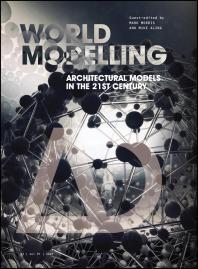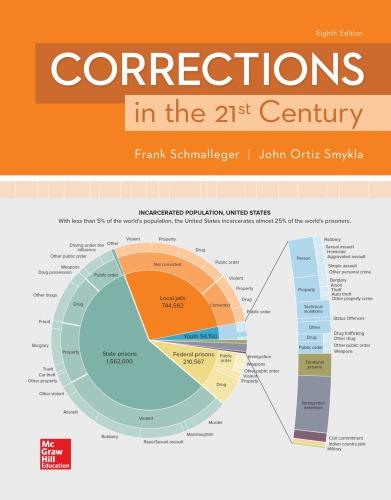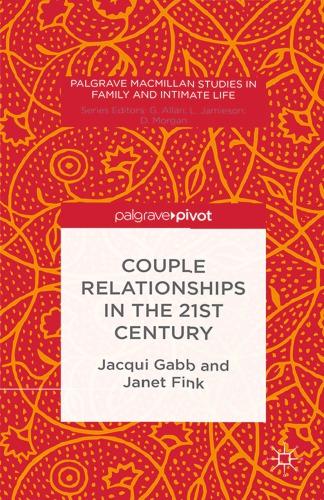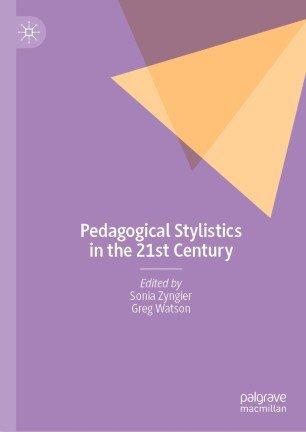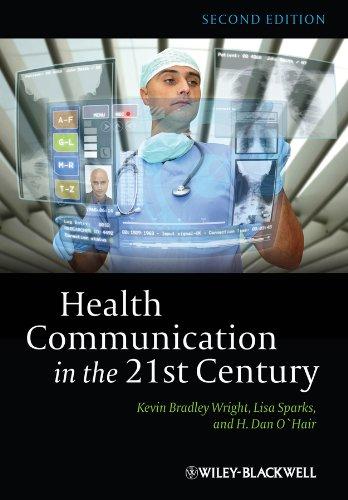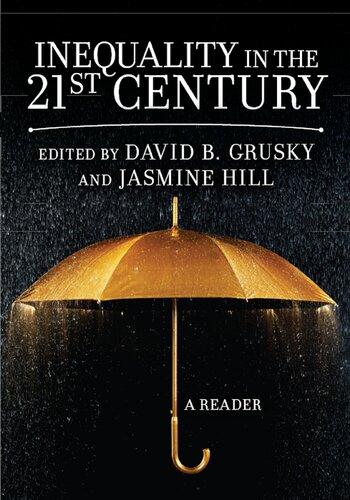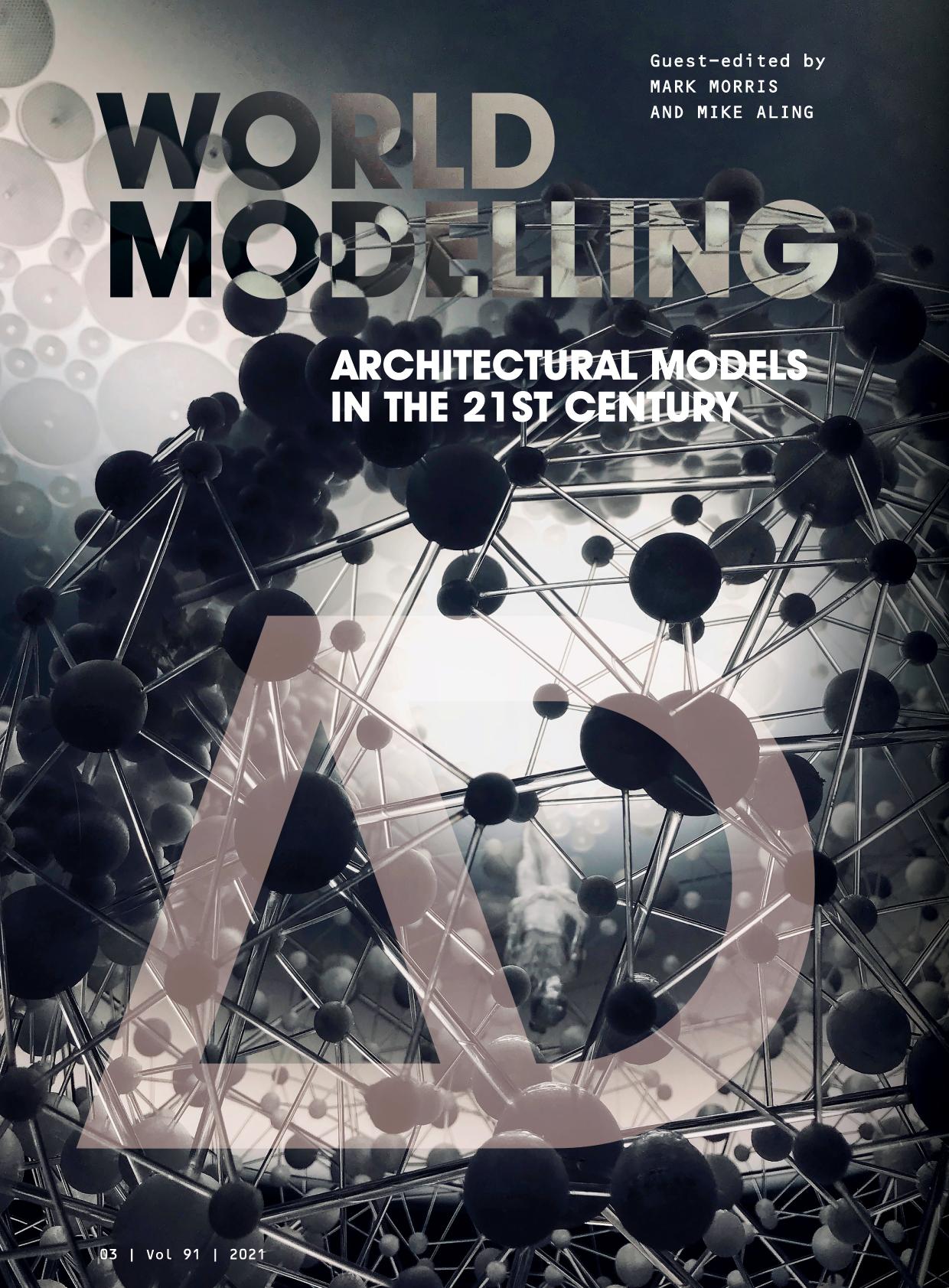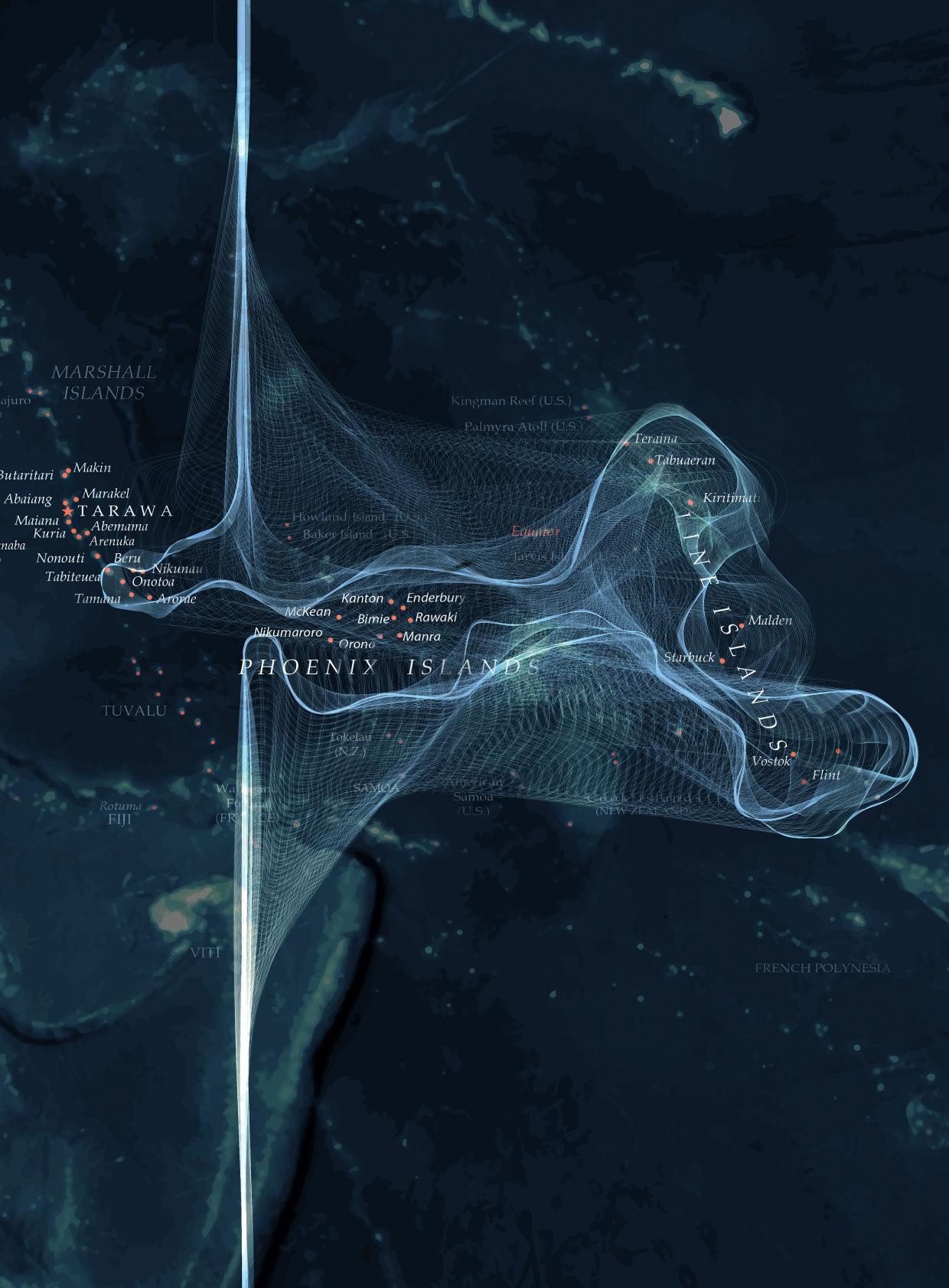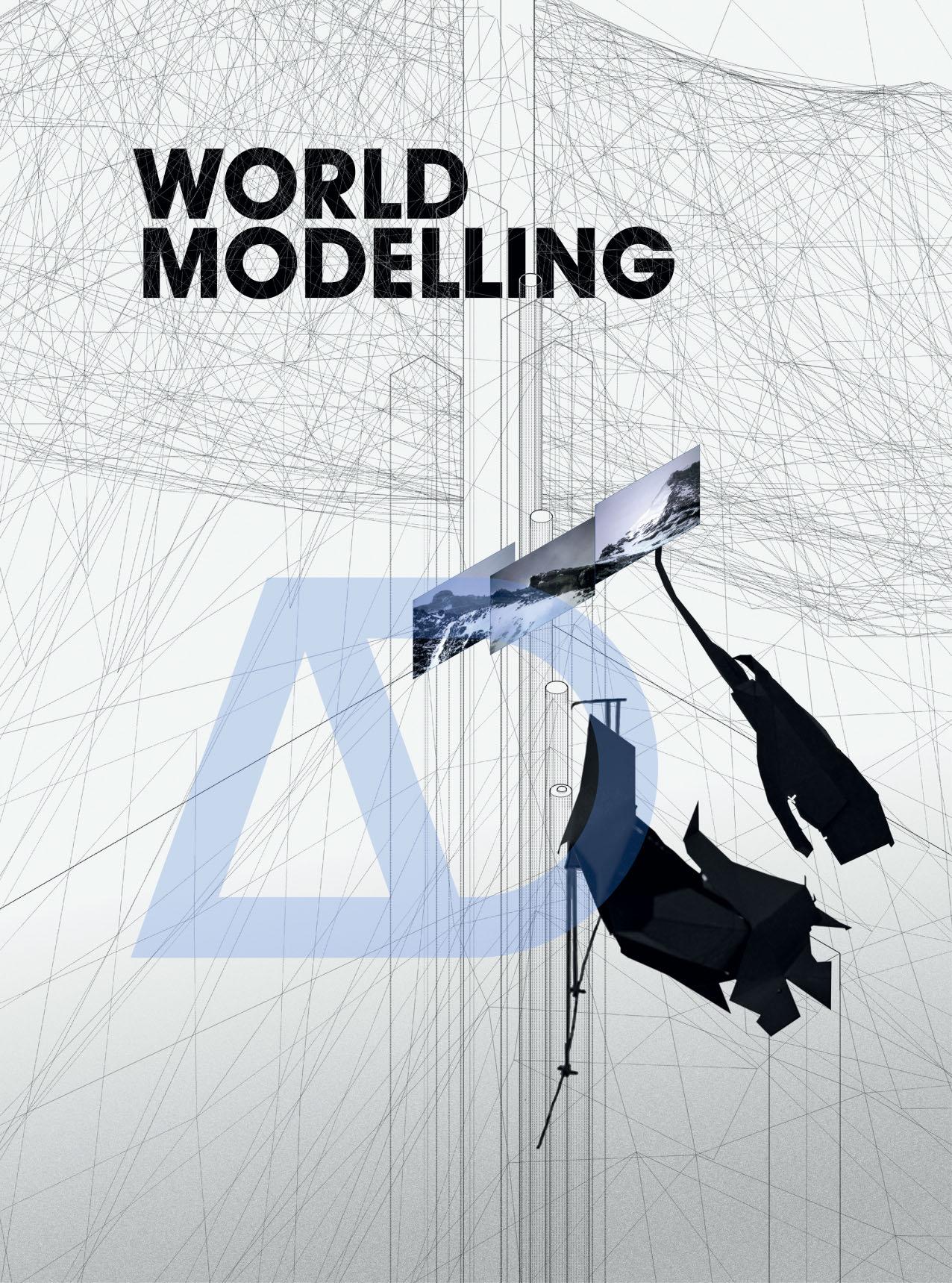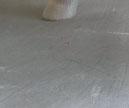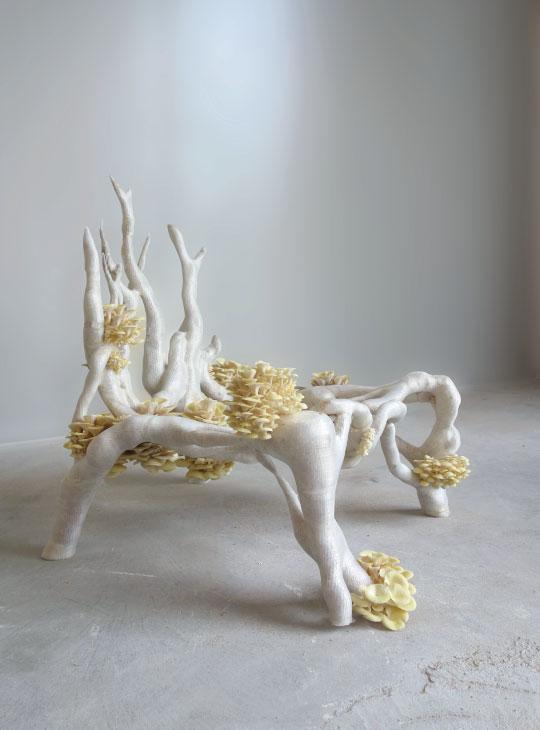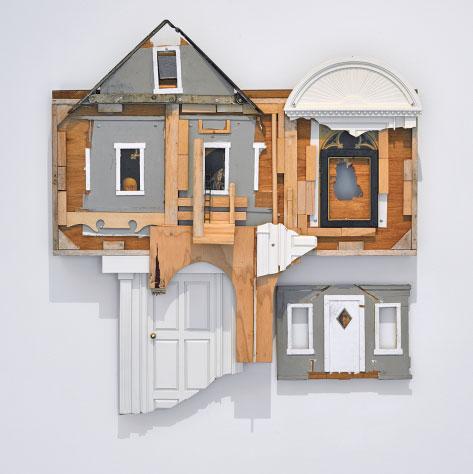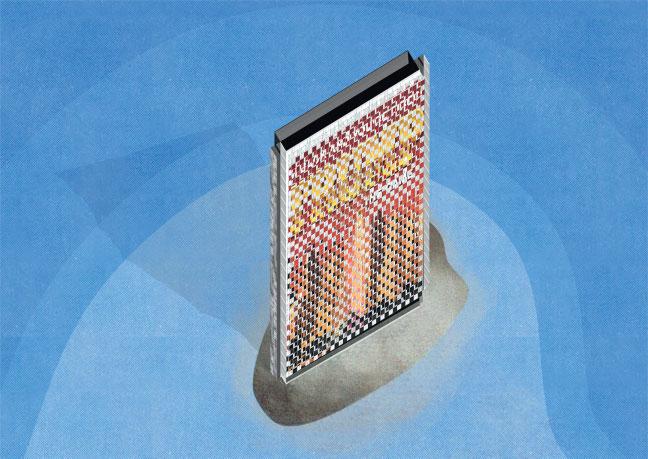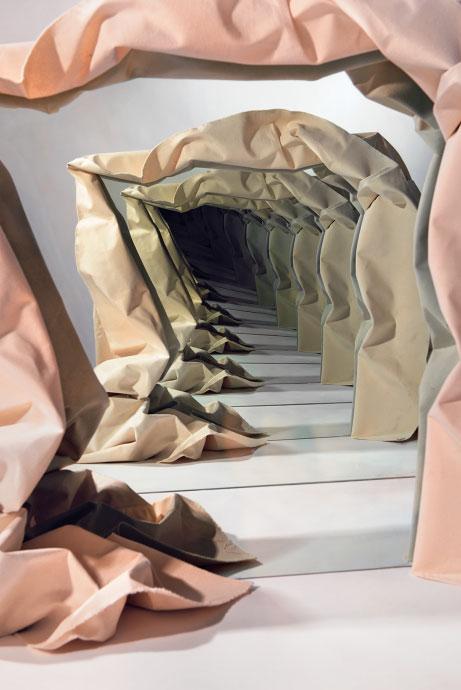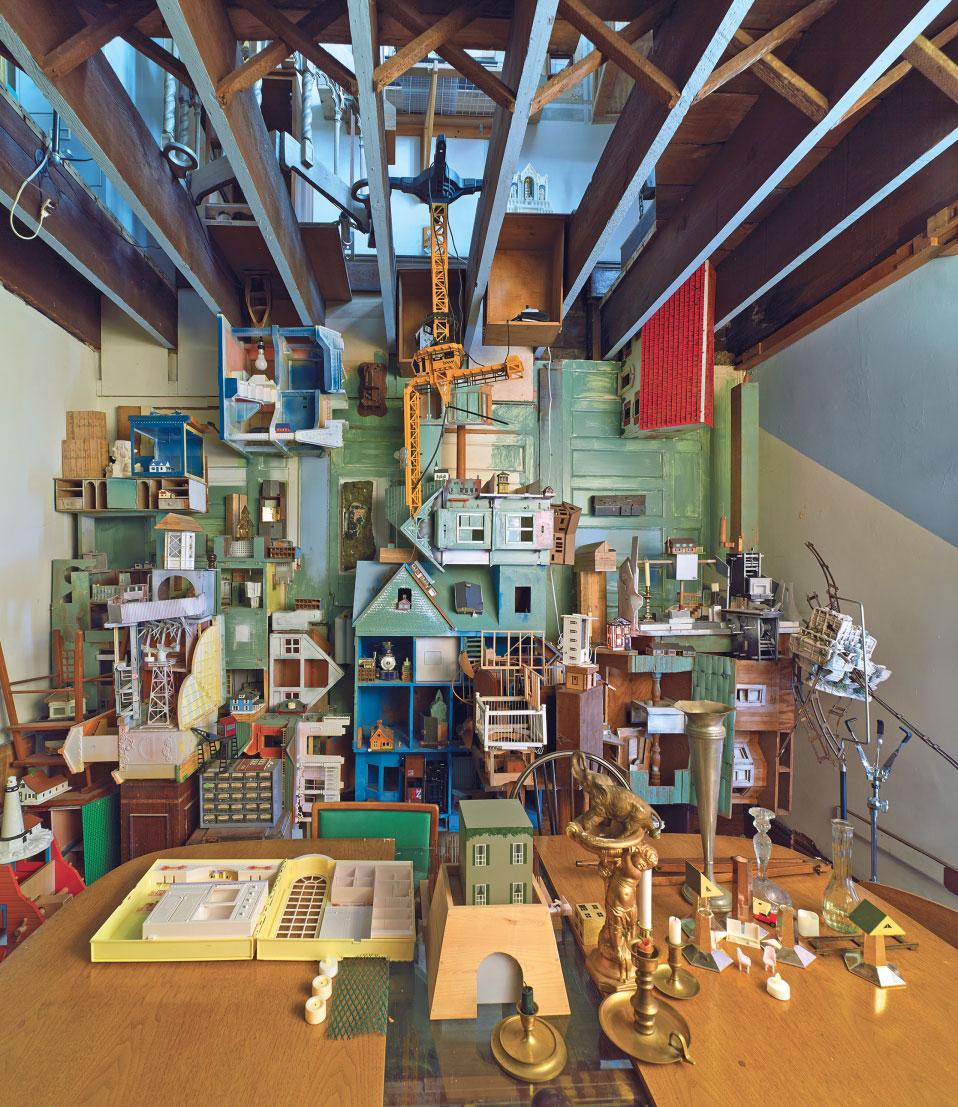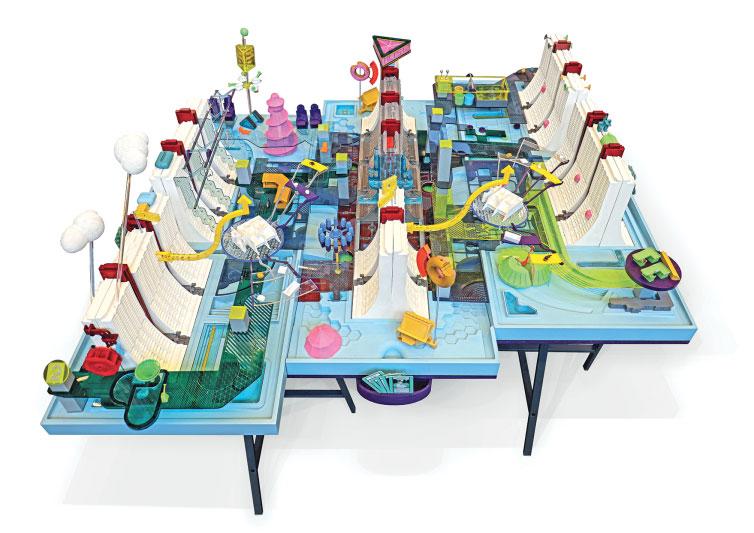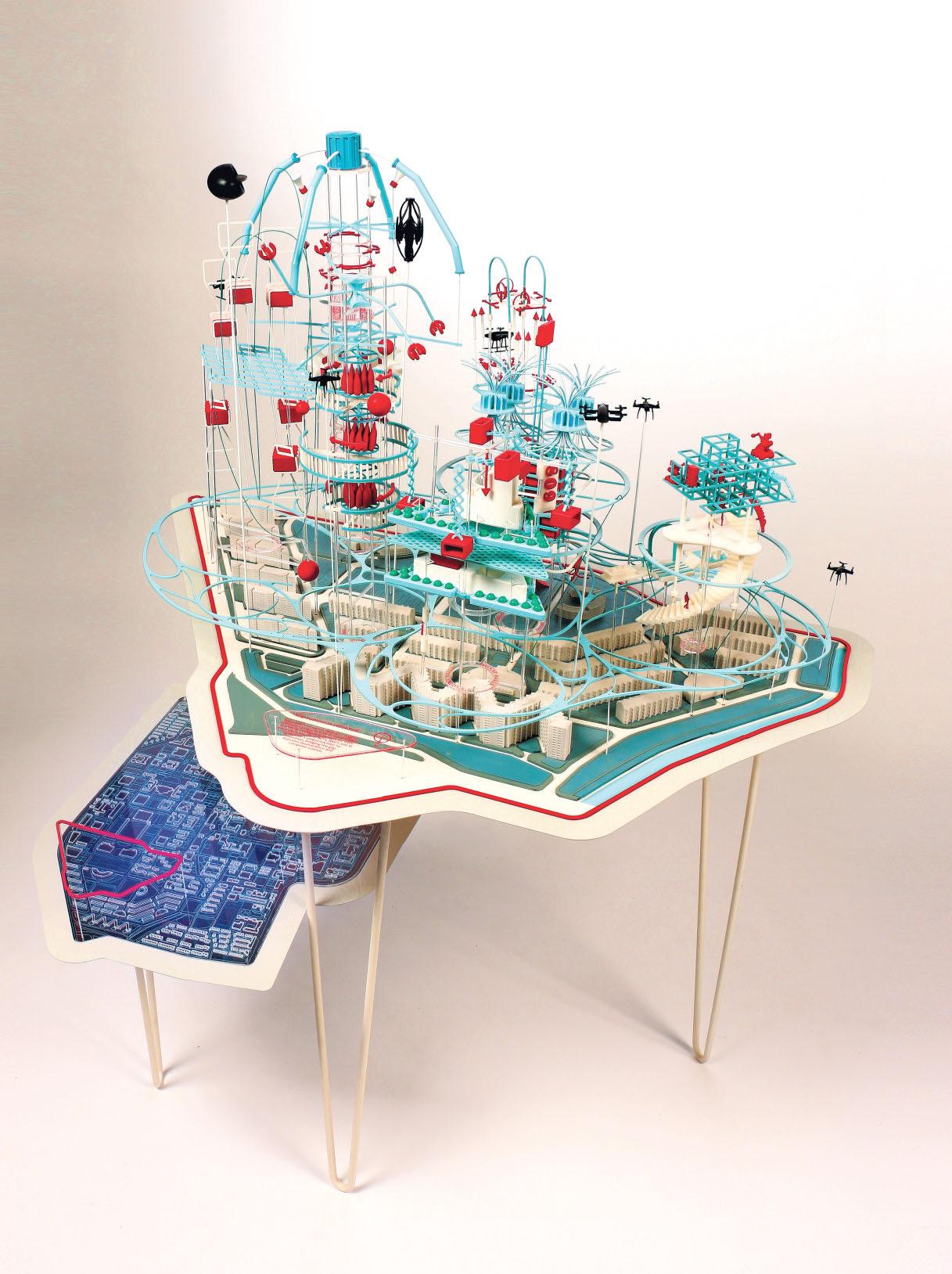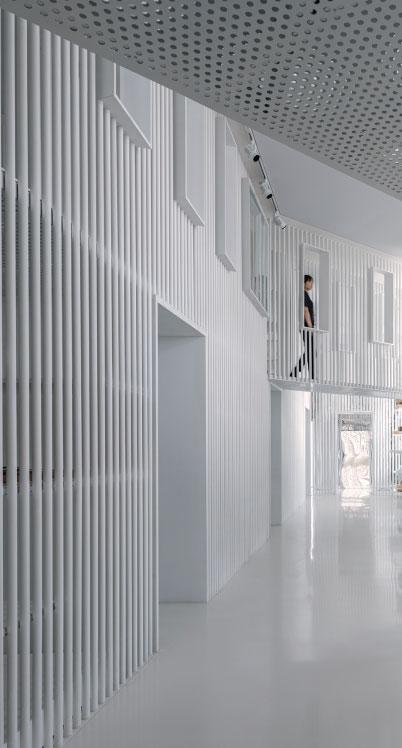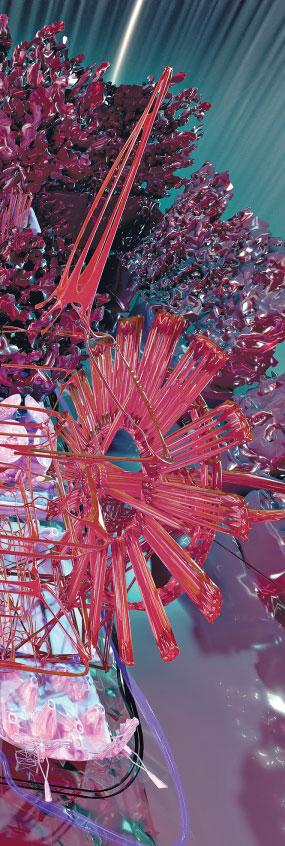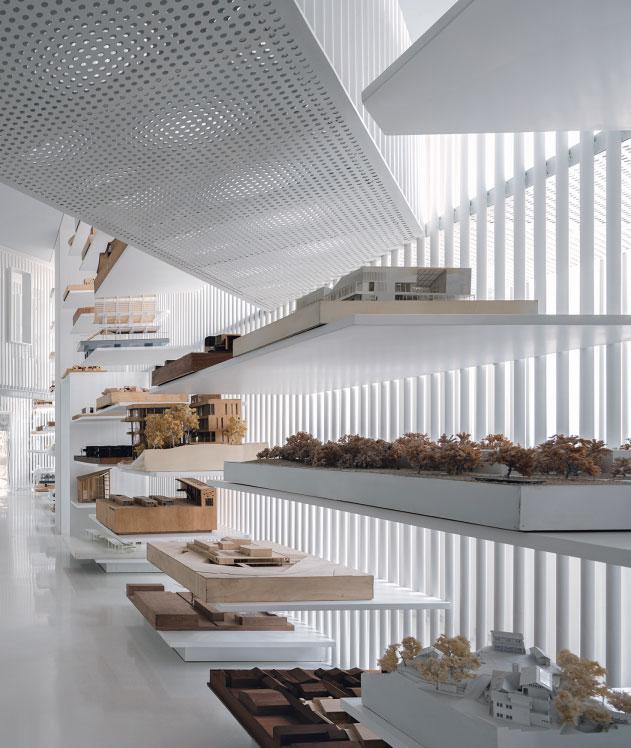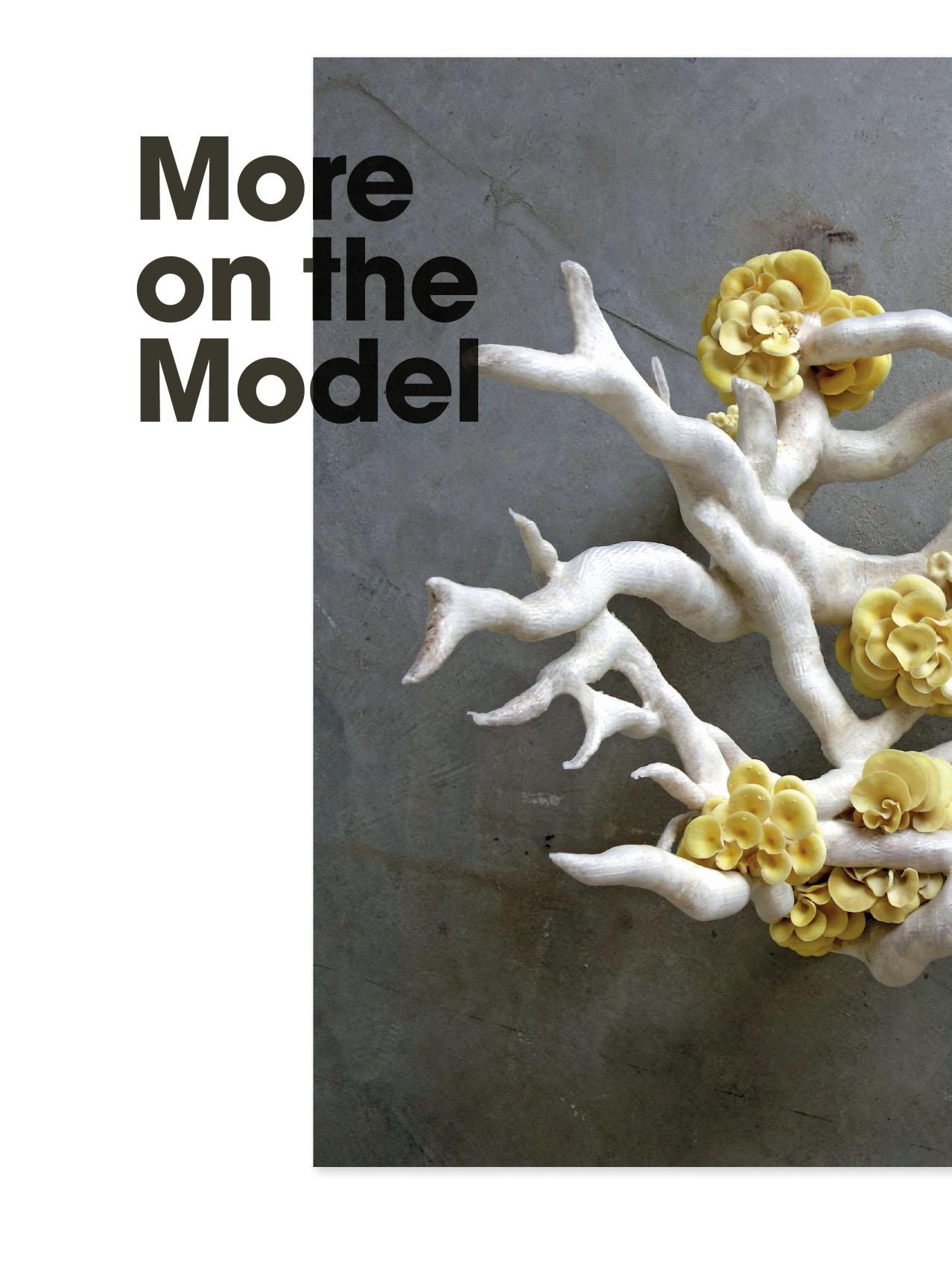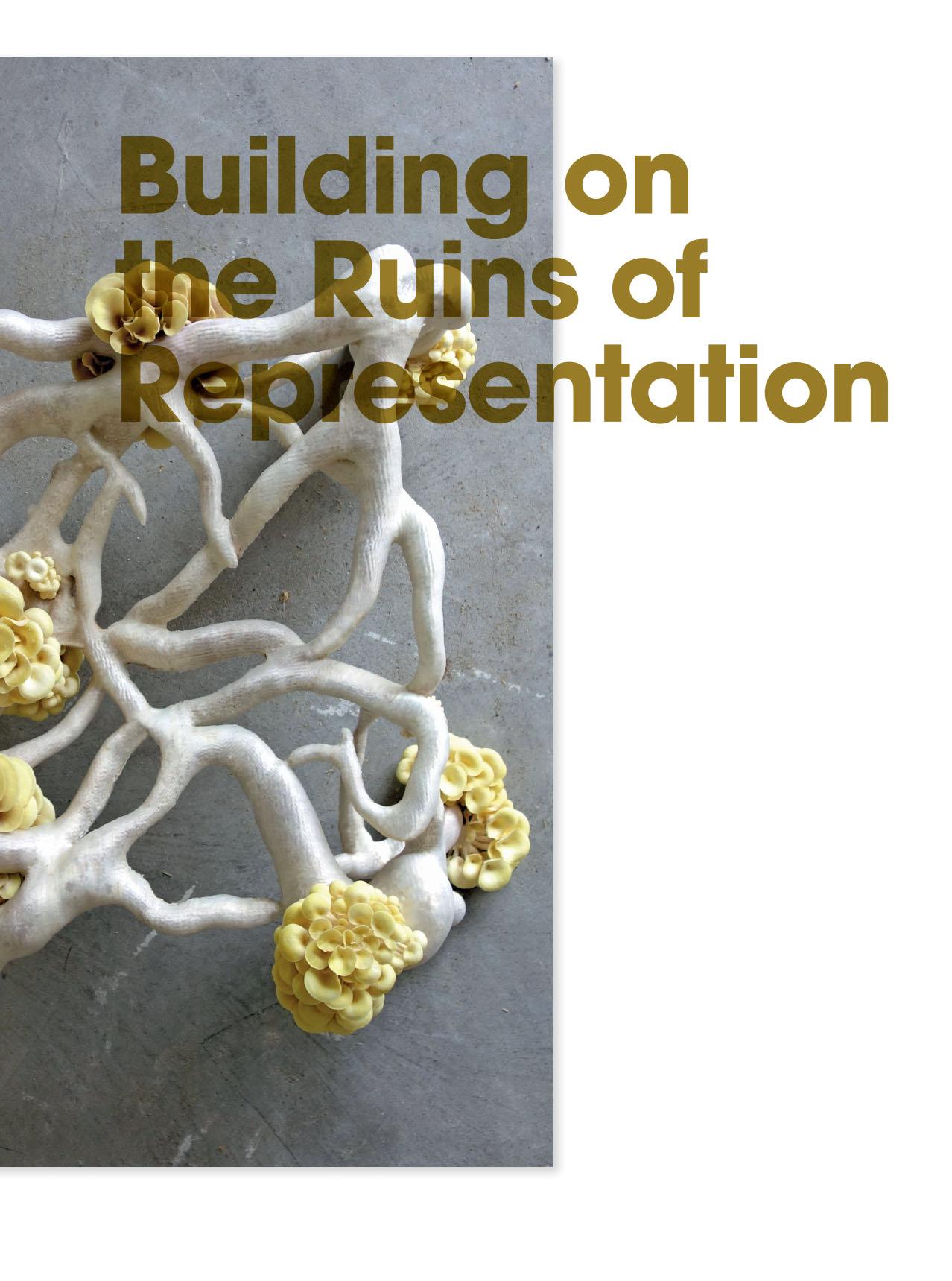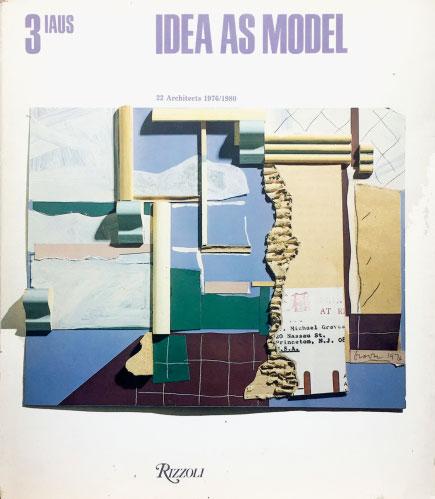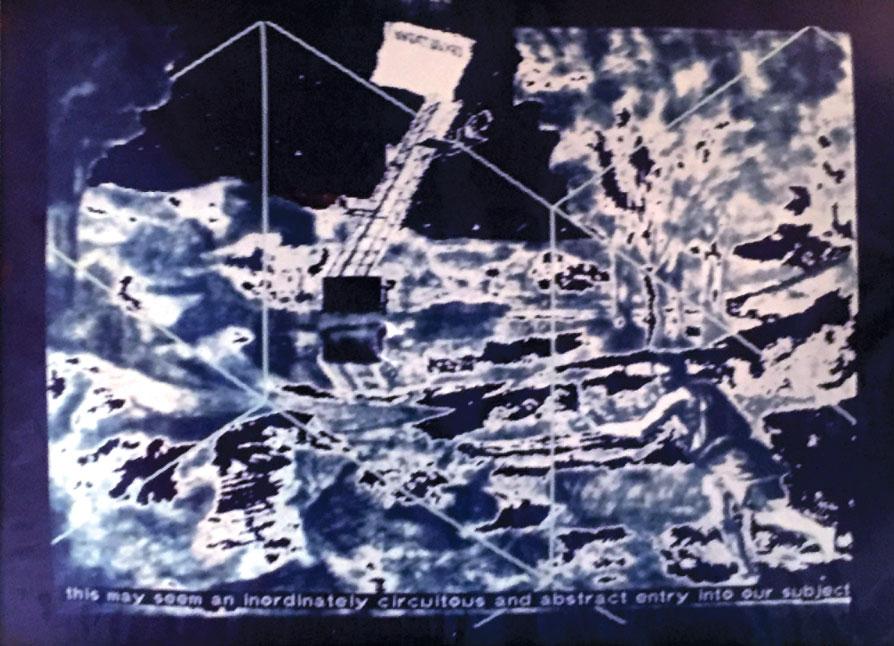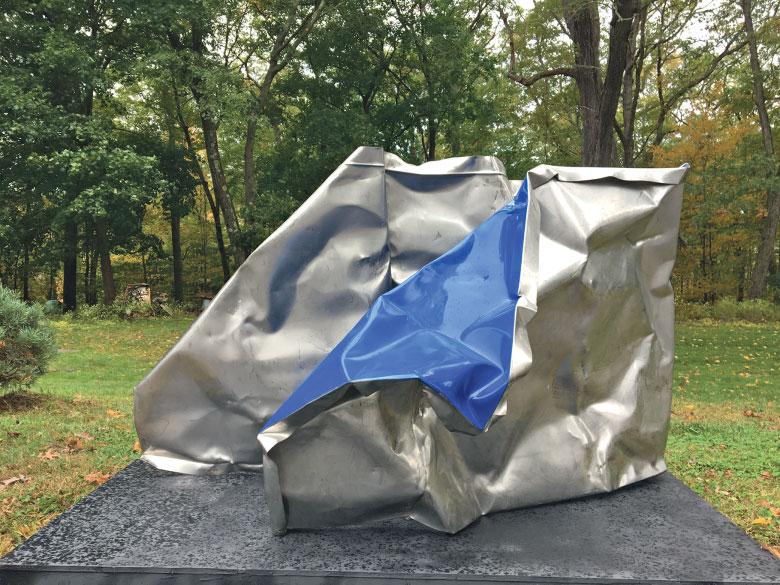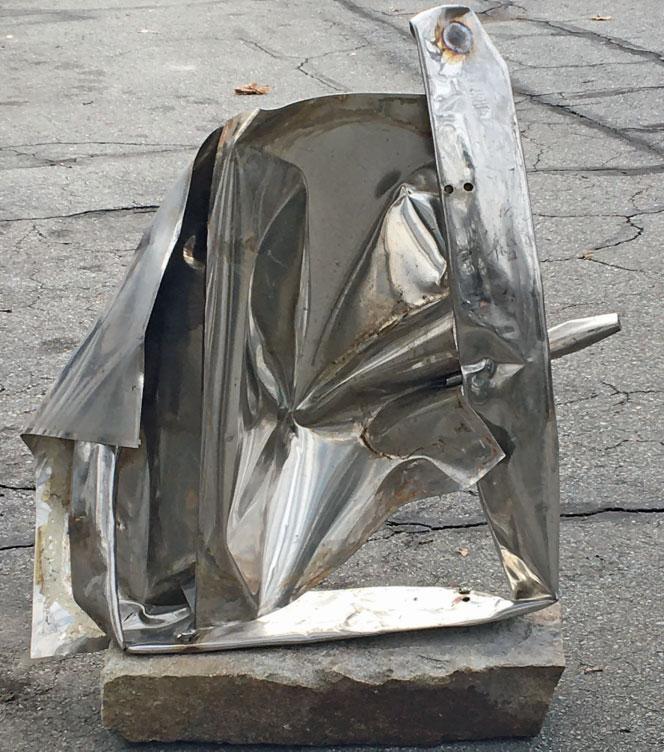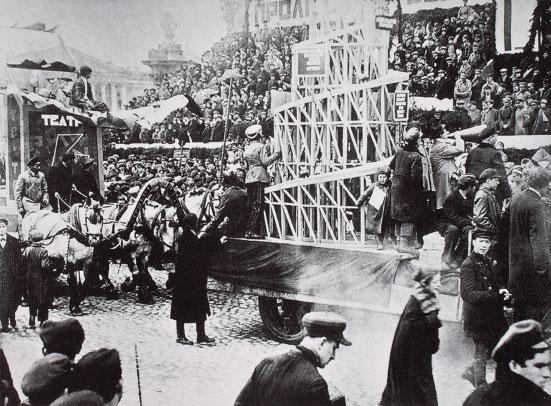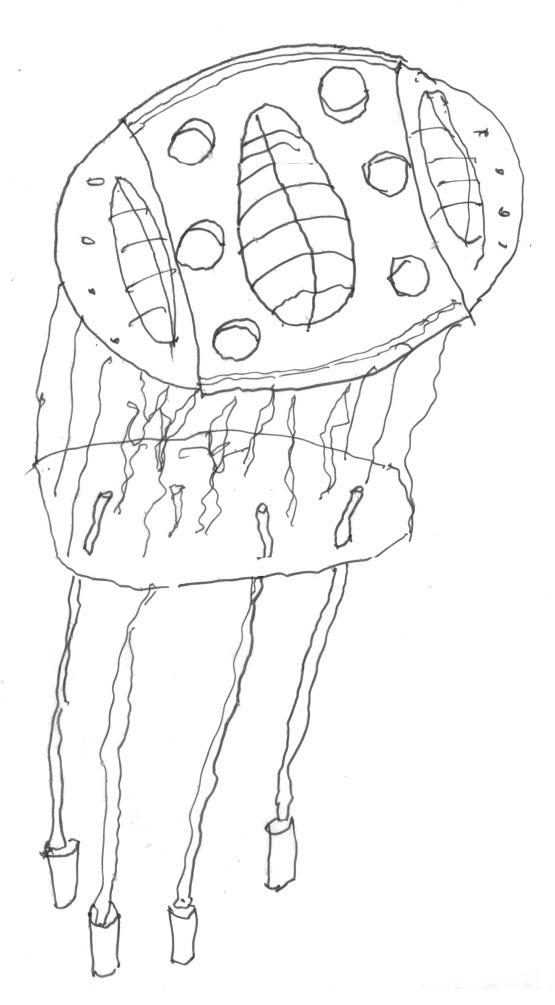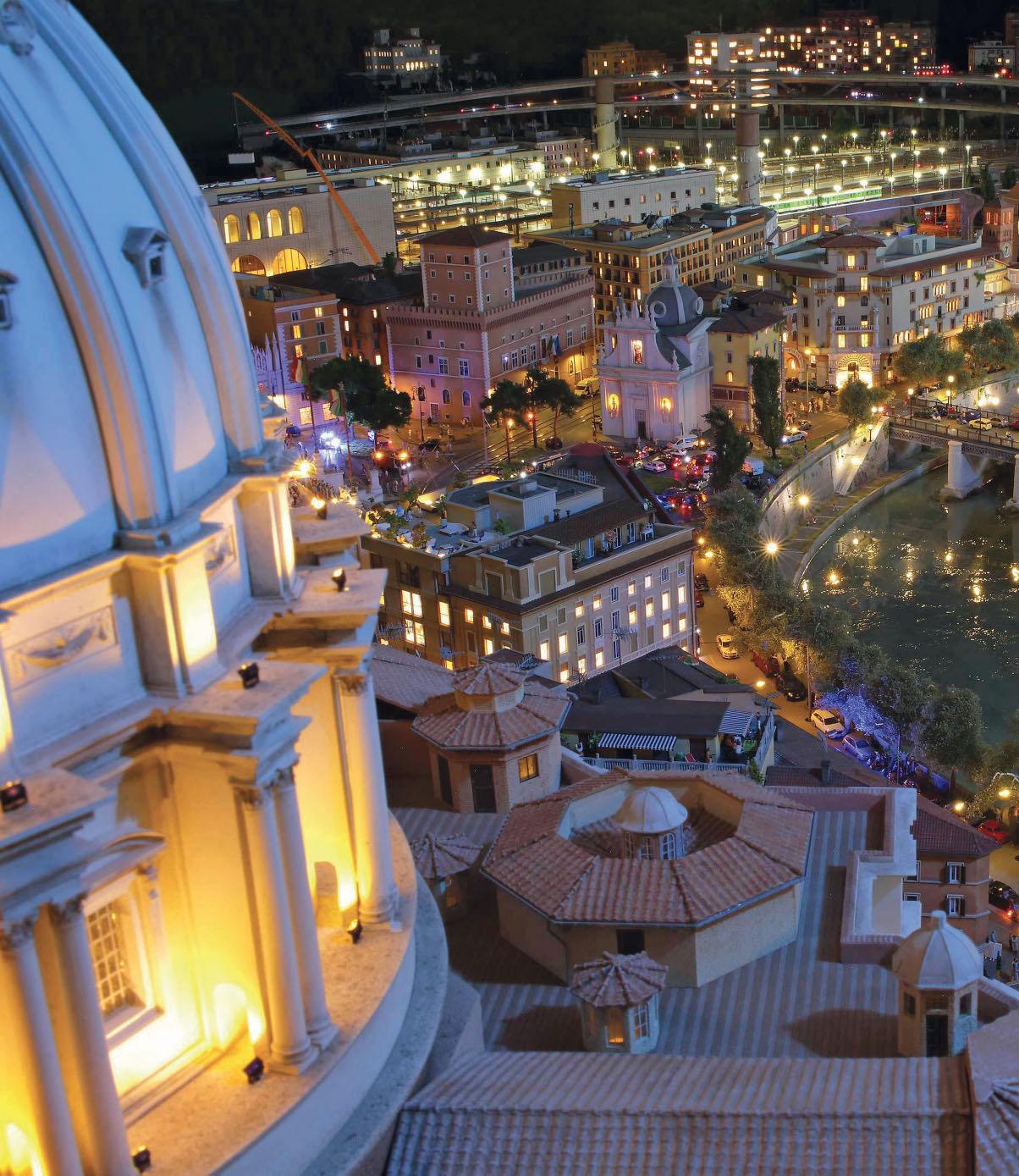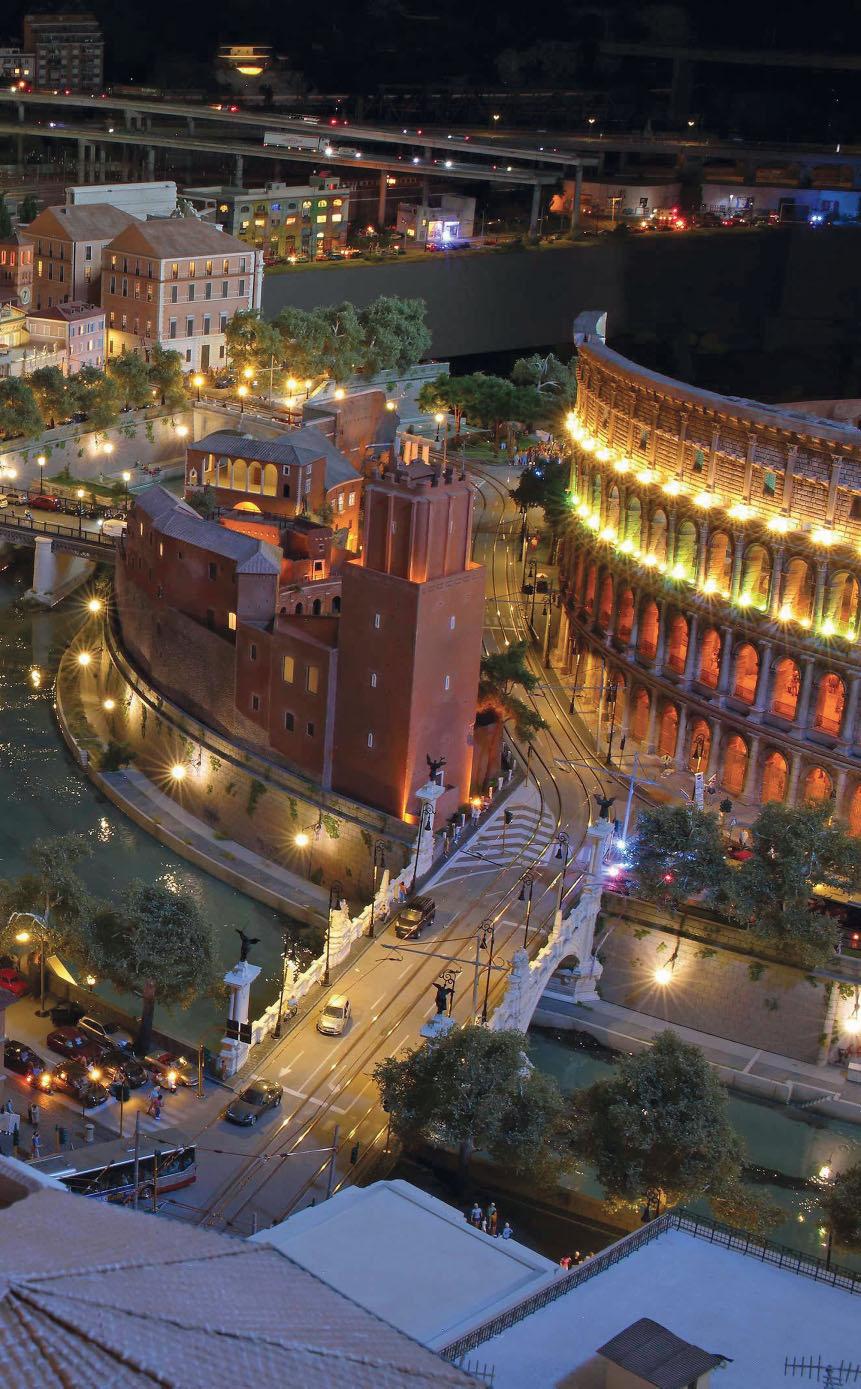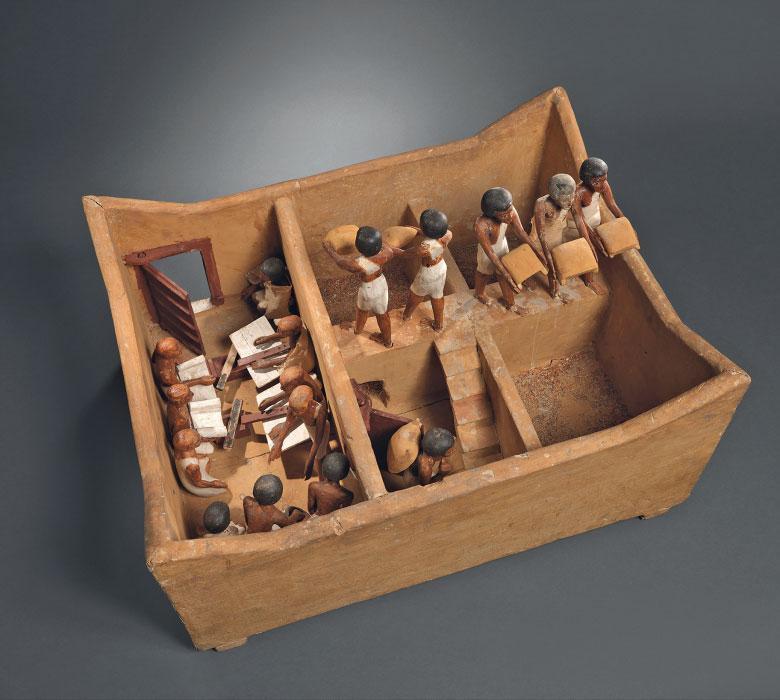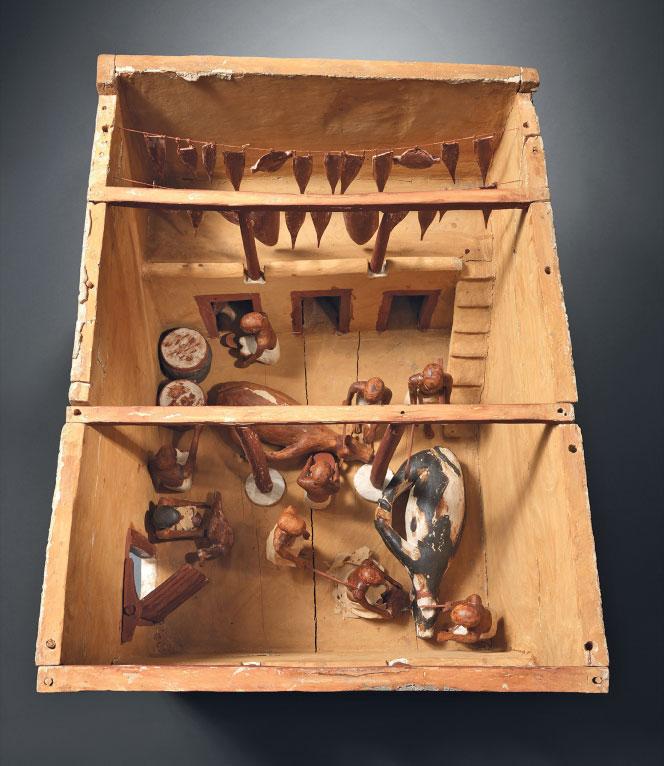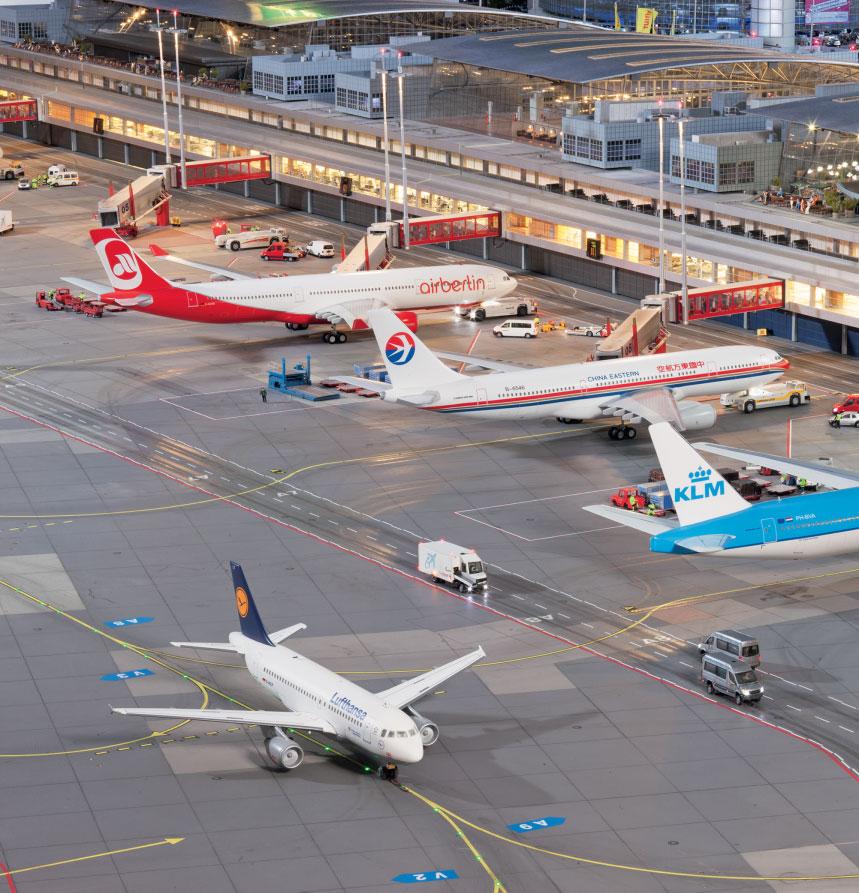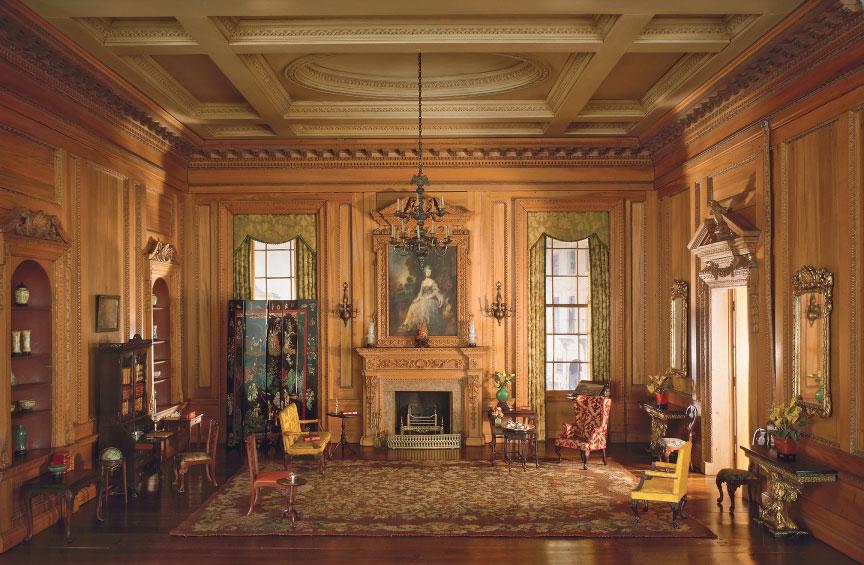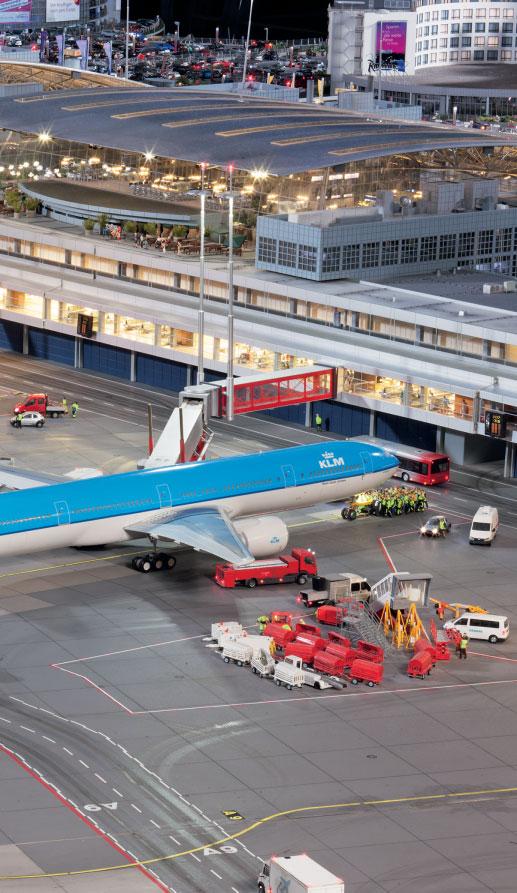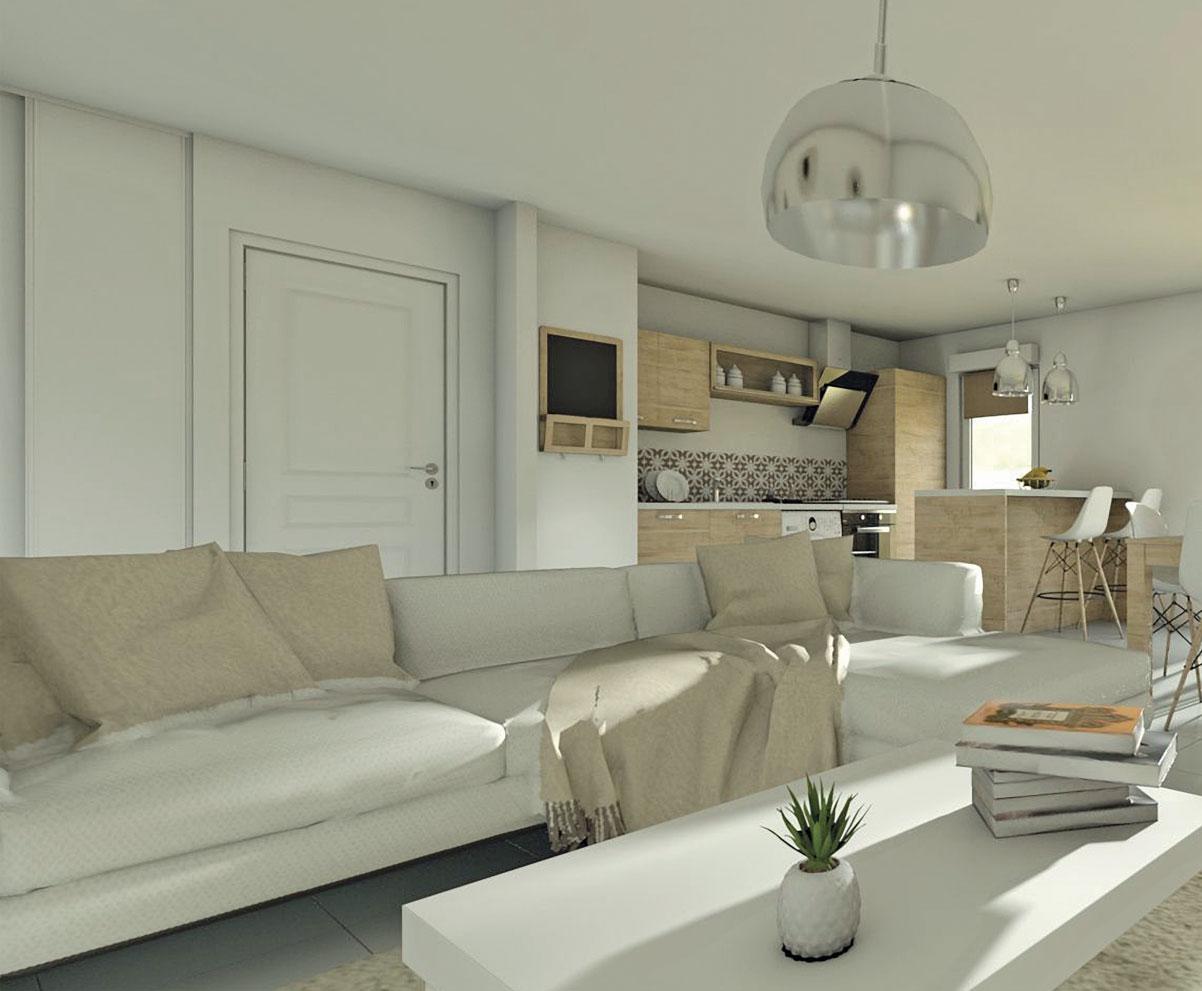Visit to download the full and correct content document: https://ebookmass.com/product/worldmodelling-architectural-models-in-the-21st-cent ury-mark-morris/
More products digital (pdf, epub, mobi) instant download maybe you interests ...
Corrections in the 21st Century Frank Schmalleger
https://ebookmass.com/product/corrections-in-the-21st-centuryfrank-schmalleger/
Couple relationships in the 21st century Fink
https://ebookmass.com/product/couple-relationships-in-the-21stcentury-fink/
Pedagogical Stylistics in the 21st Century Sonia Zyngier
https://ebookmass.com/product/pedagogical-stylistics-in-the-21stcentury-sonia-zyngier/
Scandal And American Politics In The 21st Century Busby
https://ebookmass.com/product/scandal-and-american-politics-inthe-21st-century-busby/
Health Communication in the 21st Century 2nd Edition, (Ebook PDF)
https://ebookmass.com/product/health-communication-in-the-21stcentury-2nd-edition-ebook-pdf/
Marriages and Families in the 21st Century: A Bioecological Approach
https://ebookmass.com/product/marriages-and-families-in-the-21stcentury-a-bioecological-approach/
Scandal and American Politics in the 21st Century
Robert Busby
https://ebookmass.com/product/scandal-and-american-politics-inthe-21st-century-robert-busby/
Inequality in the 21st Century: A Reader David B.
Grusky
https://ebookmass.com/product/inequality-in-the-21st-century-areader-david-b-grusky/
Global Health Nursing in the 21st Century 1st Edition, (Ebook PDF)
https://ebookmass.com/product/global-health-nursing-in-the-21stcentury-1st-edition-ebook-pdf/
Guest-edited by MARK MORRIS AND MIKE ALING
Editorial Offices
John Wiley & Sons
9600 Garsington Road
Oxford OX4 2DQ
T +44 (0)1865 776 868
Editor Neil Spiller
Managing Editor
Caroline Ellerby
Caroline Ellerby Publishing
Freelance Contributing Editor
Abigail Grater
Publisher Todd Green
Art Direction + Design
CHK Design:
Christian Küsters
Barbara Nassisi
Production Editor
Elizabeth Gongde
Prepress
Artmedia, London
Printed in the United Kingdom by Hobbs the Printers Ltd
Front cover: Minimaforms (Theodore and Stephen Spyropoulos), Of and In The World, London, 2017. Photo Theodore Spyropoulos
Inside front cover: Ezgi Terzioglu, Crossing the Line, Intermediate Unit 5, Architectural Association (AA), London, 2018. © Architectural Association, School of Architecture
Page 1: Stasus (James A Craig and Matt OzgaLawn), Everest Death Zone, 2013. © Stasus 2009–16
Denise Bratton
Paul Brislin
Mark Burry
Helen Castle
Nigel Coates
Peter Cook
Kate Goodwin
Edwin Heathcote
Brian McGrath
Jayne Merkel
Peter Murray
Mark Robbins
Deborah Saunt
Patrik Schumacher
Ken Yeang
EDITORIAL BOARD
ARCHITECTURAL DESIGN
Profile No. May/June
2021271
Journal Customer Services
For ordering information, claims and any enquiry concerning your journal subscription please go to www.wileycustomerhelp .com/ask or contact your nearest office.
Americas
E: cs-journals@wiley.com
T: +1 877 762 2974
Europe, Middle East and Africa
E: cs-journals@wiley.com
T: +44 (0)1865 778315
Asia Pacific
E: cs-journals@wiley.com
T: +65 6511 8000
Japan (for Japanesespeaking support)
E: cs-japan@wiley.com
T: +65 6511 8010
Visit our Online Customer Help available in 7 languages at www.wileycustomerhelp .com/ask
Print ISSN: 0003-8504
Online ISSN: 1554-2769
Prices are for six issues and include postage and handling charges. Individualrate subscriptions must be paid by personal cheque or credit card. Individual-rate subscriptions may not be resold or used as library copies.
All prices are subject to change without notice.
Identification Statement
Periodicals Postage paid at Rahway, NJ 07065. Air freight and mailing in the USA by Mercury Media Processing, 1850 Elizabeth Avenue, Suite C, Rahway, NJ 07065, USA.
USA Postmaster
Please send address changes to Architectural Design, John Wiley & Sons Inc., c/o The Sheridan Press, PO Box 465, Hanover, PA 17331, USA
Rights and Permissions Requests to the Publisher should be addressed to: Permissions Department John Wiley & Sons Ltd The Atrium Southern Gate Chichester West Sussex PO19 8SQ UK
F: +44 (0)1243 770 620 E: Permissions@wiley.com
All Rights Reserved. No part of this publication may be reproduced, stored in a retrieval system or transmitted in any form or by any means, electronic, mechanical, photocopying, recording, scanning or otherwise, except under the terms of the Copyright, Designs and Patents Act 1988 or under the terms of a licence issued by the Copyright Licensing Agency Ltd, 5th Floor, Shackleton House, Battle Bridge Lane, London SE1 2HX, without the permission in writing of the Publisher.
Subscribe to 1 2 is published bimonthly and is available to purchase on both a subscription basis and as individual volumes at the following prices.
Prices
Individual copies:
£29.99 / US$45.00
Individual issues on 2 App for iPad: £9.99 / US$13.99
Mailing fees for print may apply
Annual Subscription Rates
Student: £93 / US$147 print only
Personal: £146 / US$229 print and iPad access
Institutional: £346 / US$646 print or online
Institutional: £433 / US$808 combined print and online 6-issue subscription on 2 App for iPad: £44.99 / US$64.99
MARK MORRIS AND MIKE ALING
Mark Morris and Mike Aling have been discussing their shared fascination with architectural models, and their continued development in light of new media technologies, for a number of years. Both have looked to how modelling has evolved within architectural education and practice. This issue of 2, conceived in a pub opposite a model village, is their first joint project on the subject.





Mark Morris is Head of Teaching at the Architectural Association (AA) in London where he lectures in history and theory. He chairs the AA’s Teaching and Learning Committee and is a member of its Academic Board and Senior Management Team. He studied architecture at Ohio State University where he received the AIA Henry Adams medal, and completed his PhD at the University of London’s Consortium doctoral programme supported by the RIBA Research Trust Award. He was previously Director of Graduate Studies in the Field of Architecture and, subsequently, Director of Exhibitions at Cornell University’s College of Architecture, Art and Planning in Ithaca, New York. He is the author of Models: Architecture and the Miniature (Wiley, 2006) and Automatic Architecture (University of North Carolina, 2007), as well as chapters in many other books. His essays have also featured in Domus, Log, Frieze, 2, Cabinet, the Cornell Journal of Architecture and Critical Quarterly. He is a member of the Victoria and Albert Museum’s Architectural Models Network and RIBA Academic Publications Panel. His research focuses on questions of visual representation, architecture in fiction, and the study of paracosms as mental places for detailed creative work of long duration.
Mike Aling is a senior lecturer at the University of Greenwich School of Design in London, where he is the MArch Architecture programme leader. He runs Unit 14 at Greenwich, a postgraduate design group that explores new architectural modelling systems, processes and languages. In recent years Unit 14 has increasingly looked to worldbuilding as a methodology to propose architectural projects through the vehicle of models. His research examines and speculates on the continuing evolution of digital architectural modelling methodologies and procedures, and the consequences of this development on the histories and theories of the architectural model. He is fascinated by model villages and their affordances to architecture, and is currently undertaking a PhD at Newcastle University on this subject. His other ongoing research interests explore the history and potential future of the architectural book, and the role of architecture in wider printed and digital media design publishing frameworks. He has been published in a number of architectural books and journals, including 2. His design work has been exhibited in the US, South Korea, Austria and London. 1
The Many Worlds of the Architectural Model Scaling Up
INTRODUCTION
MARK MORRIS AND MIKE ALING
Greg Lynn, Satellite Worlds, ‘Other Space Odysseys: Greg Lynn, Michael Maltzan, Alessandro Poli’, Canadian Centre for Architecture (CCA), Montreal, Quebec, 2010
Partly a recollection of the moon landing, partly a sci-fi design brief, Lynn’s elliptical satellite worlds exhibited at the CCA are microcosms freed of earthly constraints, but also in dialogue with Earth.




The meaning of ‘model’ can range from the loftiest notions of paragons and ideals through to the practical operations of gluing cardboard into a 3D form, through to the most complex of digital constructions. The spectrum of what might constitute an architectural model continues to stretch and to be redefined. It is increasingly difficult to pigeonhole the architectural model as a singular object or method in the 21st century. With the ubiquity of building information modelling (BIM) in the profession, the processes of modelling and the construction of models are now arguably the dominant mode of production. We are reaching a point where every building is born a digital model, concretised in the phenomenal world over time like the slow setting of a cast. The advancement and availability of 3D-modelling software has also allowed designers to be ever more ambitious with their models, to the point where entire imagined and digitally constructed worlds can thrive. This issue of 2 does not attempt to clarify what an architectural model might be today; it aims to discuss a new shift that involves how the model sits in a world of its own making –as a ‘worldmodel’.
Recent History
Writing on the architectural model had its ‘boom’ moment in the mid-2000s. These works often opened by clarifying their engagement with this most slippery of terms. In both Albert C Smith’s Architectural Model as Machine: A New View of Models from Antiquity to the Present Day (2004)1 and Karen Moon’s Modeling Messages: The Architect and the Model (2005),2 for example, the discussion is pinned firmly to the architect’s physical model. Many of the writings were directly inspired by the preceding ‘Idea as Model’ exhibition of 1976; however, this exhibition took a decidedly different tack. The exhibition was curated by Peter Eisenman and presented physical model works from a large number of the US architectural vanguard of the time at the

Institute for Architecture and Urban Studies (IAUS) in New York, with the aim of promoting the architectural model as capable of more than communicating proposals to clients in miniaturised (and often simplified) form. These artefacts were intended to become works in their own right, beyond the representational, as ‘conceptual models’. However, in the delayed exhibition publication of 1981, Christian Hubert declared that this intention was always flawed, and that the autonomy of the architectural model was an impossibility at the time due to its intractable relationship with the subject/proposal that it represents.3 The ‘Idea as Model’ project was a ready response to Arthur Drexler’s 1975–6 ‘The Architecture of the École des Beaux-Arts’ exhibition at the Museum of Modern Art (MoMA) in New York, which, naturally, glorified the drawing. Both shows contributed to postmodern architecture, the scrappier one punching well above its weight.
In the decades that followed, model interest swung towards establishing their provenance and preserving them as objects of study. Dean of the Center for Advanced Study in the Visual Arts (CASVA) of the National Gallery in Washington DC, Henry A Millon’s exhibitions and catalogues on Renaissance and Baroque architecture from the mid-1990s included extensive scholarship around the few extant models from those eras. Tellingly, these works were published before the near-ubiquity of the digital model, perhaps to reassert the importance of the physical model in a time when it was evaporating into pixels. There were of course exceptions to the model-as-physical rule when writing on the model in the 2000s. In The Model and its Architecture (2008),4 for example, Patrick Healy opened up the term into its broadest sense, moving from Plato to Deleuze and back again. Today architects have come to accept 3D-printed and other digitally fabricated models as standard outputs, often forgetting their one-time novelty.



Greg Lynn, New City, ‘Other Space Odysseys: Greg Lynn, Michael Maltzan, Alessandro Poli’, Canadian Centre for Architecture (CCA), Montreal, Quebec, 2010
Model of one of a series of postulate megacities or small worlds that loop and coil around themselves.
This particular world, a single continuous city, is populated through and mediated by social media. The model hovers above a mirror installed in the plinth below.
Worldbuilding and Worldmaking
Worldbuilding is the practice of constructing imaginary worlds. Long associated with fantasy epics and paraliteratures, the concept has burgeoned into a field that has also encompassed media studies, film and cinema, video games studies, urbanism, landscape and, of course, architecture. Mark JP Wolf has written extensively on the subject and is joining the debate in this issue. Otherwise known as ‘subcreation’ or ‘conworlding’ (constructed worlds), the success of these fabrications relies on their consistent upholding of self-instigated internal rules and logic systems. Architecture has a complex relationship with worldbuilding: architects often imagine a slightly newer version of our current world, while being intrinsically tied to its realities. It is this propensity to
imagine new world spaces not necessarily tied to the actual existing world that we increasingly see in the making of architectural models.
There is the danger that worldbuilding becomes a catch-all term for any imagined worldspace. And while there is no discernible difference between ‘worldbuilding’ and ‘world-building’, the term ‘worldmaking’, however, is distinct. Worldmaking is discussed in philosopher Nelson Goodman’s Ways of Worldmaking (1978)5 as a form of treatise on how ideas affect the production of the world (in all of its guises, not solely the haptic and tactile). Architects arguably have a close association to Goodman’s notion: they are in the business of producing design imaginaries that act as catalysts for change in our actual (but not necessarily phenomenal) world(s).
This
Denis Maher, City Wall-scape, Fargo House, Buffalo, New York, 2014
An interior of Dennis Maher’s magnum opus, Fargo House. Maher purchased the abandoned house for $10,000 in 2009. Rather than renovate, he interrogated what was left, reconfigured and exposed the structure, and in-filled certain gaps with his packrat collection of architectural fragments and architectural toys.
room includes City Wallscape, a melange of donated dolls’ houses and scale models, something reminiscent of certain moments in Sir John Soane’s house in London.
Scales of Inquiry
James Lawton, The Gamification of Alt-Erlaa, Vienna, MArch Architecture, Unit 14, University of Greenwich School of Design, London, 2018
Student projects may signpost the way for the architectural model as a methodology for imagined new versions of the world, with physical models often increasing in size and scope, perhaps partly due to streamlined digital fabrication workflow. In this project, Vienna’s social housing megalith Alt-Erlaa is reimagined in a world of ubiquitous social credit, becoming a playground where all mundane activities are gamified in order to increase the wellbeing of the inhabitants.
Isobel Eaton, Hotel Hypnagogia, MArch Architecture, Unit 14, University of Greenwich School of Design, London, 2019
Through the simple act of inviting us into the large immersive interior of the model (we enter by lying on our back and sliding in on a wheeled bed-board), the viewer inhabits an alternative world where we live in a state of hypnagogia, the space between wake and sleep. The hotel encourages occupants to delight in the experience of drifting off. With no assigned rooms, beds or set accommodation, guests are induced to sleep where they settle in a series of controlled communal environments – as is the viewer, who is invited to sleep in the comfort of the model.

This issue of 2 was largely written during the pandemic lockdown. Rather than that circumstance being a hindrance, it seemed to focus the minds of contributors and influence some thinking on worldmodelling. Christian Hubert (pp 14–21) explicitly makes this case, finding the timing of the development and thinking around worldmodels aligned to growing awareness around the fragile ecological state of the planet. Climate change, political turmoil and social upheaval prompt a turning towards worldmodelling as a coping mechanism, both as escapism and a speculative space for testing ways to heal the planet. Hubert puts his case in the context of his earlier observations of models asserted in his influential ‘Ruins of Representation’ essay featured in the 1981 Idea as Model catalogue.6 In that 40-year gap, Hubert finds a proliferation of worldmodel thinking.
Mark JP Wolf is arguably the world’s leading scholar on the subject of worldbuilding. In his article (pp 23–31) he returns to his earlier passion for architecture, and discusses the many ways in which the architectural model has, and continues to, operate as a worldbuilding device. The appeal of miniature architectures, both actual and virtual, is discussed in relation to his theories on worldbuilding.
Co-founder of Unknown Fields, Kate Davies looks to how worldmodels or slices thereof can be expressed in different media (pp 32–9). Film and video, she claims, are especially adept at communicating not just the look of alternative worlds, but their reason for being. Atmosphere, datascapes, duration and narrative make such models seem alive.
In his last penned essay (pp 40–47), the late theorist Mark Cousins points out the telling differences between a world and the world, and the useful creative friction between the two. His unpacking of the terminology of worldmodelling brings out salient arguments and conceptual minefields. The endeavour reveals the tenebrous hold we have of any world, and how a worldas-construct is so easily deconstructed.
Rebecca Tudehope, The Tsinghua Initiative, MArch Architecture, Unit 14, University of Greenwich School of Design, London, 2019
The project reimagines Beijing’s Tsinghua University as a world-leading institution in the development of brain–computer interfaces (BCIs), brain–machine interfaces (BMIs) and artificial intelligence (AI). The model suggests how the campus might become a large-scale hybrid humanmachine computer for innovation. This is a bottom-up design, with students at the campus actively testing and optimising the spatial design of the accommodation areas and communal hubs to become more efficient and/or more delightful.
FleaFollyArchitects (pp 48–55) founded their practice with the agenda to explore the potential and limits of narrative-driven architectural models. For them, the model is the architecture, not solely a representational vehicle for a yet-to-be-realised proposal. They take us through a number of their more recent projects that increasingly blur the edges between modelling, installation and architecture.
Historian Chad Randl offers a very different approach to worldmodelling through his research on remodelling (pp 56–63). Every remodel, he contends, is another reality, an alternative world to what was before. Scale has little to do with this qualification of our home as a model of the world; a remodelled interior, a rearranged mantelpiece or shelf. He reminds us that all worldmodels are remodels, as they are all built over and include fragments of preceding ones.
Directing the Architectural Association Design Research Lab (AA DRL) in London, Theodore Spyropoulos considers a series of model investigations that move, sense, transform and amalgamate into architectures, cities, territories and worlds (pp 64–73). These are smart models of potential and agency, each a world unto itself, and each capable of spawning a world.
Following on from their monograph The Model as Performance (2018),7 Thea Brejzek and Lawrence Wallen (pp 74–81) turn their attention to built scenography as both a model of a world and a model for a world. They observe that through deliberately unfinished architectural fragments, the process of worldbuilding has been intentionally interrupted, and these model fragments operate as a self-referential yet autonomous models that provoke discourse between object and viewer.
James A Craig and Matt Ozga-Lawn, who co-run the architectural practice Stasus, discuss recent projects that utilise the nature of familiar objects and their deterritorialisation to create complex, performative and imaginative architectures through partial worldbuilding, inferred meaning and mixed-media narratives (pp 82–7).
Walking the line of the prime meridian, Ryan Dillon reveals that the most effective way to model the world is to map it first (pp 88–95). Trudging around Greenwich, London, he finds anomalies and discoveries around what, if anything, should be straightforward. As he reminds us, cartography is creative, and every map a worldmodel. One thinks of the complicated fictive maps of JRR Tolkien or George RR Martin, the latter literally becoming a world model in the famous opening sequence of the television adaptation ‘Game of Thrones’. Phil Ayres discusses his recent EU-funded research into bio-hybrid architectures and argues for the worldbuilding potential of ‘coupling’ architecture to novel biological systems (pp 96–101). Through this research we see new models emerging of architectures inspired by bacteria, mycelium and insect behaviours. And Art historian Kathy Battista showcases a number of contemporary artists that produce models (pp 102–11). She focuses on how virtual reality is an ideal speculative space, perhaps the medium for worldmodelling, that



Minimaforms (Theodore and Stephen Spyropoulos), Emotive City, 2015
The project imagined a collective and adaptive intelligent system capable of constructing communities based on personal interactions and behaviours. A self-organising system or framework of smart spherical units, each merging infrastructure with inhabitation, could produce whole cities and worlds, but never as fixed assemblies. The extraordinary model reveals both the single architectural cell and one possible amalgamation of many.
opens up a number of architectural possibilities. She notes the accessibility, economy and open-endedness of VR works and, as Hubert also suggests, our increasing willingness to linger in the virtual.
Flipping the Coin
As much as our roles as guest-editors of this 2 have been bound up to reaching out to others for their views and expertise on the subject of worldmodelling, much of the joy in this project was had in putting forward our own statements on the topic, for example in examining the history of the British model village (pp 112–19). Originally the invention of architect Charles Paget Wade at the turn of the 20th century, model villages have long fed into our cultural psyche, often bound up in the twee and retrograde. An ongoing model village project for Greenwich, London, is discussed in relation to how this seeming innocence might be misplaced, and how these peculiar enterprises of reactionary architectures, urbanisms and politics might signpost opportunities for how architectural models might function as worldbuilding exercises.
‘Paracosmic Project’ (pp 120–27) suggests how paracosms seem to answer some basic worldmodelling questions. Who is predisposed to think this way? Why is it useful to nurse a world in the mind’s eye over a span of years, a lifetime? How is worldmodelling a genre of imaginative play and a basis for literary, artistic and scientific discovery? The paracosm tips in the psychoanalytic, the blurring of childhood and adult preoccupations, and questions whether such immersive and detailed thinking is not also obsessional and bound to some traumatic experience. The real pleasure found in paracosms is the interplay between fiction writing and crafting fictive worlds, between writing and designing, the storytelling through design as Kate Davies champions. Rather than being framed as a coping mechanism, paracosmic thinking could be considered a workspace in one’s mind palace, a synthesis of observations marshalled to interrogate problems and suggest solutions?




There is a firm logic to using worldmodelling to cope and tinker with the world, to expand the scope of architectural endeavour
Mike Aling, Groenwych for DLR Model Village, Greenwich, London, 2020
In the penultimate article in this issue, Mike Aling discusses his own model village project and suggests how eccentric British model villages have perhaps long held many of the clues as to how architectural models might be thought of as worldbuilding exercises.
Worldmodelling
The illustrations in this issue point to the diversity of worldmodels – spanning practice, academia and fine art – as well as the permissiveness of the term. They offer a parallel analysis and suggest how scale is still an important aspect of modelling as an economy of making, but also as a conceptual aid. Even in the paradigm of digital modelling where the subject is assumed to be 1:1, thinking through scaling is still an important, and perhaps necessary, process. If small-scale models in general lend us apprehension more readily and intuitively than, say, plans or sections, the scale of models representing worlds only intensifies this sensibility. We combine two forms of scalar benefits: one suggested by Claude Lévi-Strauss, that ‘By being quantitatively diminished, it seems to us qualitatively simplified. More exactly, the quantitative transposition extends and diversifies our power over a homologue of the thing, and by means of it the latter can be grasped, assessed and apprehended at a glance;’8 the other, more squarely, about things like world models, promised by Gaston Bachelard:
Wutopia Lab, Models in Model, Shanghai, China, 2019
below: Architecture office Wutopia Lab have recently completed the interior for China’s first architectural model museum. As well as being a comprehensive collection of recent Chinese projects in physical model form, the collection is designed as a world of model proposals that together culminate into a vision of a future city namedThe Last Redoubt.
Such formulas as: being-in-the-world and worldbeing are too majestic for me and I do not succeed in experiencing them. In fact, I feel more at home in miniature worlds … The cleverer I am at miniaturising the world, the better I possess it. But in doing this, it must be understood that the values become condensed and enriched in miniature. Platonic dialectics of large and small do not suffice for us to become cognizant of the dynamic virtues of miniature thinking. One must go beyond logic in order to experience what is large in what is small.9
Yet there is a firm logic to using worldmodelling to cope and tinker with the world, to expand the scope of architectural endeavour, to escape a world in trouble and hopefully return with some ways to rescue it. As Mark Cousins suggests in ‘Worlds Without End’ (pp 40–47), to work with the world, one must fashion for themselves a world away. For architecture, arguably models are increasingly proposing less about the object, and more about the objective. 1
Notes
1. Albert C Smith, Architectural Model as Machine: A New View of Models from Antiquity to the Present Day, Architectural Press (Oxford), 2004.
2. Karen Moon, Modeling Messages: The Architect and the Model, Monacelli Press (New York), 2005.
3. Christian Hubert, ‘The Ruins of Representation’, in Kenneth Frampton and Silvia Kolbowski (eds), Idea As Model: 22 Architects 1976/1980, Rizzoli (New York), 1981, pp 17–27.
4. Patrick Healy, The Model and its Architecture, 010 Publishers (Rotterdam), 2008.
5. Nelson Goodman, Ways of Worldmaking, Hackett Publishing Company (Indianapolis, IN), 1978.
6. Hubert, op cit
7. Thea Brejzek and Lawrence Wallen, The Model as Performance: Staging Space in Theatre and Architecture, Bloomsbury (London and New York), 2018.
8. Claude Lévi-Strauss, The Savage Mind, Weidenfeld & Nicolson (London), 1966, p 23.
9. Gaston Bachelard, The Poetics of Space [La poétique de l’espace, 1958], trans Maria Jolas, Beacon Press (Boston, MA), 1994, pp 150, 161.
Text © 2021 John Wiley & Sons Ltd. Images: pp 6–7 © CCA; p 8 © Dennis Maher; p 9(t) © James Lawton. Image courtesy of Mike Aling; p 9(b) © Isobel Eaton. Image courtesy of Mike Aling; p 10 © Isobel Eaton. Image courtesy of Mike Aling; p 11 Photo Theodore Spyropoulos; pp 12–13(t) Image courtesy of Mike Aling; pp 12–13(b) Image courtesy of Wutopia Lab/CreatAR
Christian Hubert
Studio Klarenbeek & Dros, Mycelium Chair, 2013
3D-print of living mycelium. Mycelium is the collective product of vegetative (asexual) growth of fungi. It consists of a mass of branching, threadlike hyphae that grow at their tips and respond to environmental stimuli in an exploratory and irregular process. The structure of Klarenbeek & Dros’s chair is formed by 3D-printing of the living material, and evokes branching patterns of growth. Actual growth is part of this process as well, as mushrooms will grow out of the mass of mycelium.
New
York-based architectural
designer and critic Christian Hubert discusses the change in status of the architectural model since he wrote his seminal text ‘The Ruins of Representation’, published in the Idea as Model exhibition catalogue in 1981. The previous notion of the model as object and representation has become much more complex as contemporary concepts of worldmodelling have been investigated and established.
In my desultory manner, I have been preoccupied with models ever since perching at the Institute for Architecture and Urban Studies (IAUS) in New York over the course of the 1980s. The catalogue essay I wrote at the time, ‘The Ruins of Representation’, along with a brief revisionist postscript written some years later and published in the Dutch journal Oase, presented in concentrated form my interest in the expressive registers of architectural models, especially their dual functions as representations and actual objects, in the desires that they embody, and some of their underlying ideological functions in the rhetoric of Postmodernism, with its penchant for historical pastiche.1
I have primarily used my training as an architect as a springboard for intellectual inquiry, especially at the IAUS, and for creating environments for artworks, for artists and exhibitions in my design work. More recently I have been working on metal sculptures out of stainless steel. My creative and critical work share implicit affinities that are not always visible, and sometimes they only make sense to me after the fact.
Most models today are more concerned with the future than was the case when I wrote my essay in 1981, and they employ techniques that have developed in the interim – especially digital technologies. One indication of the transformative effects of the digital has been a change in the defining features and ontological status of the model. The model’s physicality previously enabled it to function as both object and representation, and to define a space between two and three dimensions. But today that physicality has waned in importance. The physical model has become more of a by-product than it once was. A 3D model produced from a digital file – whether milled, rendered, integrated into the world of a game or even used to fabricate full-sized building parts – remains primarily an expression of its digital instructions. It can convincingly simulate or instruct, but one source of its aesthetic criticality has been undermined. It doesn’t really matter if the model is a physical object today. It is the scenario expressed through the model that has become primary, and the goal of modelling a process has taken the place of modelling a product.
Worldmaking
Today, the concept of worldmaking subsumes the idea of the model, which has become an agent of the projective imagination. What worlds do these models build and occupy? Are they a source of hope or fear? What is the role of nature, as human culture has come to consider it, in those worlds? A deep ambivalence informs most of these models. They face the future with a mixture of optimism and dread. They are also meant to directly affect the course of events. Future-oriented models are reflexive, in the sense of creating feedback loops that change perceptions of reality, and in that sense they are meant to change reality itself. They move beyond representation with the goal of setting out possible worlds; some leaning towards forms of utopia, others towards dystopia.
Although the term has not been formally adopted by the International Union of Geological Sciences (IUGS), the current period in Earth’s history is informally known as the Anthropocene Epoch, to describe the period when human
Idea as Model, Institute for Architecture and Urban Studies (IAUS) catalogue cover, 1981
In 1976, the IAUS mounted an exhibition entitled ‘Idea as Model’. Paul Goldberger in the New York Times would complain of the exhibition: ‘What is most disturbing is that there is no attempt, either through choice of exhibitors or through any sort of accompanying text, to discuss the whole question of models and their role in the process of making architecture’ (27 December 1976, p 58). The publication of Idea as Model (1981) would come after the fact, as a retrospective catalogue, with essays by Richard Pommer and Christian Hubert and a cover collage by Michael Graves.
Christian Hubert,
Architectural Folly
This early computer image of a future form of architectural folly evokes an imaginative experience of cyberspace as a historical landscape. The image incorporates a figure from a painting by Nicolas Poussin (Landscape with Man Killed by a Snake, 1648), El Lissitzky’s Lenin Podium project (1924) and a quote from the intellectual historian Hayden White.
Cuber(t), an
, Leo Castelli Gallery, New York, 1983
Christian Hubert, Inner Landscape (blue), Dudley, Massachusetts, 2019
The play between representation and objecthood has been of explicit interest in painting and sculpture. Following the directions indicated by Picasso’s guitar, which translated Cubist syntax into actual space, a number of works have situated themselves at the bounds of pictorialism and objecthood, locating the concerns of art at a crossroads of painting, sculpture and architecture. This painted stainless-steel piece occupies a similar niche.
Christian Hubert, Transitional Object a, 2020
Paul Goldberger sought to differentiate architects from both painters and sculptors. He claimed that good architects are not sculptors, for architecture is concerned with the creation of interior space, whereas sculpture is pure form, although Frank Gehry’s work undermines that distinction. This sculpture, one of a series, suggests a similar ambiguity. Considered as a ‘transitional object’, a developmental concept developed by Donald Winnicott, it resists answering the question of whether it was found (in the world) or made up instead.
activity started to have a significant impact on the planet’s climate and ecosystems. The concept of the Anthropocene gives humans planetary roles and responsibilities. The term is meant to be scientifically descriptive, but it inevitably entails ethical responsibility for its consequences. On the one hand, it acknowledges the defining role of humans: they have become forces of nature. On the other hand, it implicates humans in processes that they do not fully understand and cannot really control. As global ‘apex predators’, humans themselves are at risk from the environmental stresses they have caused or exacerbated, such as rising sea levels, the fragility of human foodchains, water shortages and the possibilities for global pandemics. In this sense, worldmaking is not a metaphor. It is a literal obligation, and not just to humanity. It requires imagination, but not in the form of wishful thinking.
We have already proclaimed the Death of Nature. Perhaps it is not dead yet (we would be too), but what a job humans have done damaging it. Humans are making a world inhospitable to most species and increasingly to themselves. While they have succeeded in making planet Earth support a greatly increased human population, with significant gains in human standards of living, this achievement seems increasingly fragile. The bills are coming due, and the costs to other species and to habitats will be unbearably high.
The dreams of new worlds seem to coincide with the imminent collapse of the old one, and the new ‘desire’ of the model, as expressed in worldmaking, is to be instrumental in creating these new worlds, to promote a reflexive reality, informed by hopes and fears that motivate its dynamic force. In this sense, models have become performative. They not only point to the future, but lay claim to building new worlds (even fictional ones), in the full awareness that those will not necessarily be improvements on the existing ones unless humans become stewards of life on Earth.
There are two main ways in which these reconfigurations of reality, technique, aesthetics and natural processes can inform one another. The first is an explicit ecological and social agenda, in which life in every form is understood as process, in which humans, their technologies, other species and the planet are all stakeholders. The second is the project of enabling human inquiry and design to work symbiotically with other agents – other processes or other species. The current task of models is to incorporate those parallel strains, to embody their potentials, and to function as ‘models’ in the sense of exemplars.2 A wide range of exemplars is available today. These include hybrid life forms – chimeras combining organisms and human technology, or new subjects such as networked symbiotic organisms (forests, lichens, slime moulds etc) – that move beyond concepts of the individual or population.
Worldbuilding
Like many boys his age, a young man in my immediate family (call him A) has spent long hours online playing computer games. It is tempting to call this an addiction, but I feel that this would be ungenerous. It is certainly a
The model purports to present architecture, not represent it. Unlike the signs of language, whose signification is primarily a matter of arbitrary convention, the relation of the model to its referent appears motivated, in the sense that it attempts to emulate or approximate the referent. Here, the model is defined by its performative function, as a harbinger of a new utopian society. This simplified model (of a model) was carried through the streets of Leningrad in 1925. Joseph Stalin may have been on the tribune.
The dreams of new worlds seem to coincide with the imminent collapse of the old one, and the new ‘desire’ of the model, as expressed in worldmaking, is to be instrumental in creating these new worlds
Float of Vladimir Tatlin’s Monument to the Third International, Leningrad, Russia, 1925
time sink, though, and he seems to inhabit a parallel world in which he socialises with friends he has never met, even to the point of actually rescuing one of them who had taken steps to kill himself. Over the years A has played a series of games, from Minecraft, which definitely involves ‘worldbuilding’, to Total War. Minecraft is explicitly structured around making worlds, both on the individual and community level, and it is endlessly modifiable. The game is a small step away from architectural modelling programs like SketchUp, and in turn it has modified the way the newer generations perceive architecture. A claims, with some truth, that he has learned a lot about military history in Total War, in its many iterations, as the game seems to have been meticulously researched. Games such as this provide vivid experiences of other times and places. In an application to college, he submitted an essay that involved participation in the 19th-century Greek War of Independence, which he was able to describe in convincing terms, due at least in part to his first-person game experiences.
In his extraordinary novel The Overstory (2018), which focuses on the life of trees and humans who value and communicate with them, Richard Powers describes a brilliant game designer, crippled in childhood from falling out of a tree. In the book, this genius coder develops a highly successful multiplayer world game called Mastery. His project managers, who have become ‘boy millionaires’ in the process, think he is crazy when he suggests incorporating ‘the marvelous world of what is happening underground, which we are just starting to learn how to see’. They insist you can’t make a game out of plants, ‘Unless you give them bazookas’. His response is to ask, ‘Why give up an endlessly rich place to live in a cartoon map? Imagine: a game with the goal of growing the world, instead of yourself.’3
I am reminded of the confusion between the map and the territory, in Jorge Luis Borges’s one-paragraph literary forgery ‘On Exactitude in Science’, written in 1946 and quoted in ‘The Ruins of Representation’: ‘In that Empire, the craft of Cartography attained such perfection that the Map of a Single province covered the space of an entire City, and the Map of the Empire itself an entire Province. In the course of Time, these Extensive maps were found somehow wanting, and so the College of Cartographers evolved a Map of the Empire that was of the same Scale as the Empire and that coincided with it point for point.’4
Both examples are doubly fictional – a hypothetical game described in a work of fiction, and a spurious history ascribed to a fictional author – but the ‘worldbuilding’ impulse remains unmistakable, and they express the same priorities that I have been arguing for here. Even the ambiguities of the ‘real’ and the ‘virtual’ recall the arguments of ‘The Ruins of Representation’.
Models have become increasingly anticipatory in nature, not as simple representations, but as predictive scenarios. In this sense, they contribute to world ‘making’. In the Anthropocene era, they describe the world that humans are in the process of making by extrapolating from current trends in environmental degradation. For the most part, they are adaptations to conditions increasingly hostile to human life, in a hot, dry and dangerous planet, or on other planets altogether.
Christian Hubert, Kelp Oasis, 2020
Worldmodelling emerges as the world starts to collapse. It is a coping mechanism and a logical reaction at the same time. Only through speculation at the scale of the world can solutions to ecological, climate and socioeconomic catastrophes be considered. This sketch for an ‘ocean oasis’ proposes a design for an educational kelp farm and wellness centre that offsets the warming and acidification of the ocean at a local level.
Neri Oxman and Mediated Matter Group, Silk Pavilion II fabrication, Abano Terme, Italy, 1999
opposite: The Bombyx mori silkworm starts by spinning a scaffolding structure that it triangulates, while attaching its fibres to its immediate environment. Over the course of spinning this scaffolding, it will also close in onto itself to begin to construct its cocoon out of a single fibre. The fabrication process of the Silk Pavilion emulates the process of the silkworm through both robotic techniques and management of live silkworms. It consists of two phases: the creation of the ‘scaffold’ by a robotic arm, and subsequently deploying thousands of silkworms to spin a secondary silk envelope. A rotating jig ensures that they spin a flat surface. The project authors describe the Silk Pavilion as a case study for biomimetic digital fabrication.
Worldmodelling
Nature everywhere speaks to man in a voice that is familiar to his soul.
—
Alexander von Humboldt5
If worldmaking aims at making and remaking the world, and worldbuilding seeks to develop alternate or imaginary worlds, worldmodelling is a search for insights into the workings of the world as we find it. Apparent triumphs of the technological imagination are taking place against a backdrop of anxiety about species’ extinctions and threats to the survival of human life. The title of a sobering account of a time after humans, The World Without Us (2007)6 purports to give a scenario of the pace of change that would result from the end of human intervention in the landscape, and the process of natural selfhealing that would take its place. In cities like New York, during the COVID-19 pandemic, we have recently caught a glimpse of that world, when birds are heard singing in the early morning instead of the rumbles and honks of automobiles, or when the sky returns to a bright blue without the haze of pollution.
Even as the natural world is under attack, profound new insights into its workings are suggesting ‘models’ – in the sense of exemplars – for creative thought and design. The potential for new forms of modelling is not limited to addressing environmental issues. They also open up new modes of aesthetic imagination. Biological evolution, for example, has primarily been described in terms of (functional) adaptation, and judgements of beauty have generally been considered the exclusive province of humans. Aesthetic judgement, especially since the Enlightenment, has been identified with a harmony between the world and the workings of the human mind. But in The Evolution of Beauty (2017), Richard Prum convincingly documents the ‘transformative power of female mate choice’ on the appearance and behaviours of male birds.
For Prum, following Darwin, ‘“Beauty Happens” (as the animal perceives it )’ whenever the social opportunity and
sensory/cognitive capacity for mate choice has arisen.7 New opportunities for symbiotic design and co-production with other species are emerging, such as Neri Oxman’s and the MIT Mediated Matter Group’s work with silkworms (1999), or the mycelium chair by Studio Klarenbeek & Dros (2013), although a delicate creative balance between humans and other species needs to be established in every case. As humans, we need to move away from our species-centric views of nature and our urge to control in order to better understand how we are part of the world.
Alexander von Humboldt claimed that the ‘netlike, entangled fabrics’ of nature appear gradually to the observer.8 According to Merlin Sheldrake, what was a metaphor used to describe the ‘living whole’ of the natural world is literally the case in mycorrhizal (fungal) networks, in which trees and fungi are inextricably entangled. Science and technology have led to new metaphors in turn, such as ‘the Wood Wide Web’ – coined more or less at the same time as mathematical tools were being developed for the study of networks, and when the World Wide Web seemed to afford new utopian opportunities. In a humorous passage, Sheldrake wonders if humans tend to give ontological priority to trees over fungi, a ‘plant-centric’9 view of fully symbiotic relationships.



A poignant slogan of the counterculture of the late 1960s was ‘Utopia Now!’ (today a reference to a clothing brand –most likely trademark protected), and it is only a small step from the study of fungi to calls for ‘changing one’s mind’ through psychedelics. A recent book by Michael Pollan, a convert to benefits of psychedelics, documents lasting changes to personality occasioned by consuming ‘the flesh of the gods’, including the sense of being one with nature, and the feeling of ‘co-creatureliness’.10 This renewal of interest in the benefits of psychedelics has given new hope to wishful thinking, which lies beyond the scope of this brief essay. It remains an open question as to whether subjective experiences of ‘one-ness’ with nature can lead to effective attunement between nature and culture, but the key question for humanity is whether it can integrate its increasingly powerful capacity to control the Earth with its ethical responsibility for the future of life and a symbiotic and poetic relation to other life forms. Whether the Anthropocene will turn out to be a moment of creativity or a catastrophic one remains very much an open question. Performative models will serve as signposts along the way. 1
Notes
1. Christian Hubert, ‘The Ruins of Representation’, in Idea as Model, Rizzoli (New York), 1981, pp 16–27, and ‘The Ruins of Representation Revisited’, Oase #84: Models Maquettes, NAi Publishers (Rotterdam), 2011, pp 11–19.
2. See Thomas Kuhn, The Structure of Scientific Revolutions, University of Chicago Press (Chicago, IL), 1974.
3. Richard Powers, The Overstory, WW Norton (New York), 2018, pp 412–13.
4. Jorge Luis Borges, ‘On Exactitude in Science’, A Universal History of Infamy, Penguin Books (London), 1975, p 325.
5. Quoted in Andrea Wulf, The Invention of Nature, Alfred A Knopf (New York), 2015, p 54.
6. Alan Weisman, The World Without Us, St Martin’s Press (New York), 2007.
7. Richard O Prum, The Evolution of Beauty, Doubleday (New York), 2017, pp 72, 119–20.
8. Merlin Sheldrake, Entangled Life, Random House (New York), 2020, p 149, and note page 268.
9. Ibid, pp 160 ff.
10. See Michael Pollan, How to Change Your Mind, Penguin Press (New York), 2018, ch 2.
Text © 2021 John Wiley & Sons Ltd. Images: pp 14–15 © Studio Klarenbeek & Dros / www.dotunusual.com <http://www.dotunusual.com/>; p 17(t) Courtesy of Christian Hubert; pp 17(b), 18, 20 © Christian Hubert; p 21 © Neri Oxman / Mediated Matter Group
Miniature Places for Vicarious Visits
Worldbuilding and Architectural Models
Mark JP Wolf
Frederik and Gerrit Braun, Miniatur Wunderland, Hamburg, Germany, 2011
The Italian section of Miniatur Wunderland, as seen at night, requiring thousands of miniature light bulbs to be integrated into the models and automated by computer. Using lighting to simulate a diurnal cycle adds to the realism of the model as well, and gives viewers a God’s-eye view not only spatially but temporally.
Professor Mark JP Wolf
from Concordia University Wisconsin in Mequon takes us on a historical journey, discussing significant aspects and precedents of the practice of worldbuilding, from the ancient Egyptians to JRR Tolkien and George Lucas. He demonstrates that worldbuilding is a deep part of the rich history of human culture, and key to humanity’s imagination.
Architectural models are as old as worldbuilding itself. The Egyptian collection in New York City’s Metropolitan Museum of Art contains objects from the tomb of Royal Chief Steward Meketre (c 1981–1975 BC) which include 24 models – of a bakery, brewery, granary, slaughterhouse, carpenter’s workshop and more. The Ancient Egyptians even used architectural models to gain authorisation for building projects, some as tall as three storeys high, and their models included such details as doorways, windows, balconies, stairways, pillars and even large storage jars.1 Museum exhibits on famous architects, like Frank Lloyd Wright and Frank Gehry, often contain models of buildings as well. And then there is the Archi-Depot Museum in Japan, a museum devoted to the display of architectural models, from study maquettes to final design models.
Apart from their historical and aesthetic value, not to mention their practical value as three-dimensional blueprints for the planning of structures, architectural models also represent a particular form of worldbuilding, a practice most often associated with fantasy and science-fiction creators, like JRR Tolkien or George Lucas. Worldbuilders are more than just storytellers; they often have detailed descriptions or imagery of such things as vehicles, buildings, weapons, clothing and designs present within their works as well (models used for filmmaking, even when they do not appear on screen, are often seen in ‘Making Of’ books and documentaries, as well as museum exhibits on filmmaking and various franchises). Tolkien has detailed descriptions laying out the design of places like the seven-tiered city of Minas Tirith, whereas filmmakers like Lucas often build elaborate physical models of locations in order to plan film shoots, and many models are actually used in the films as well, as visual effects. Architectural models are a unique area of worldbuilding because, like the models of fictional worlds, they begin as imaginary places, designs being constructed in three dimensions, but instead of remaining imaginary they bring those designs into the real world, and the places they depict become real places. Imaginary worlds have always overlapped the real world (or ‘Primary World’, as Tolkien called it); in many stories travellers pass from our world to an imaginary one, either by vehicular transportation, portals or other means connecting the two worlds in some way.2 Although they are objects in the real world, architectural models are likewise depictions of imaginary places, ones that often precede the real buildings which are made in their image. Thus, the architectural model is both a form of worldbuilding as well as a tool for worldbuilding, an artwork as well as an intermediate stage leading to a final construction. But architectural models can also be built based on existing buildings, or built just for their own sake, without ever leading to a full-scale building.
Models as Miniature Worlds
As the Met’s Egyptian collection demonstrates, architectural models have a long history. Their entry into more public life came in the 1700s and 1800s, when dolls’ houses were produced not as toys but as educational tools used by mothers to teach their daughters household management.3 Some later dolls’ houses were built as miniature replicas of the owner’s house to show off their wealth. By the end of the 19th century,
Model of granary with scribes from the tomb of the Ancient Egyptian Royal Chief Steward Meketre, Metropolitan Museum of Art, New York, c 1981–1975 BC
The granary model is populated with characters demonstrating how the areas of the building are used. It shows the bags of grain being recorded by scribes; another man carries a bag through the door from the scribe’s room to the storage room (with several others in line behind him); and in the storage room five men are emptying their bags into the room-sized storage areas.
Model of a slaughterhouse from the tomb of the Ancient Egyptian Royal Chief Steward Meketre, Metropolitan Museum of Art, New York, c 1981–1975 BC
Although they have doors and windows to the outside, these Egyptian models are handily contained within the wooden boxes that serve as their outer walls. Not pictured here, the slaughterhouse also had a removable roof, a wooden lid that covered the top of the model.
Frederik and Gerrit Braun, Miniatur Wunderland, Hamburg, Germany, 2011
In Miniatur Wunderland’s 150-square-metre (1,600-square-foot) Knuffingen International Airport section, details on rooftops and inside windows add to the model’s realism even if one does not consciously note all the effort that has gone into them. Also, unlike model railways which are mass-produced and sold commercially, many of the Wunderland models were custom works that had to be built by hand.
Narcissa Niblack Thorne, English Drawing Room of the Early Georgian Period, Thorne Miniature Rooms, Art Institute of Chicago, c 1937
An example of one of the highly detailed rooms in theThorne Miniature Rooms. Besides the elaborate miniatures that make up the décor, the rooms are lit to match the lighting of full-sized rooms as they would appear at various times of day, making the illusion of scale even more successful.
Like dolls’ houses, these worlds are populated ones, and their animation lends them a temporal dimension that makes them more immersive than static models
when industrialisation allowed objects to be mass-produced, dolls’ houses came to be considered objects for play, with miniature people used as avatars, allowing children to vicariously enter the world and interact with it.4 At the same time, dolls’ houses and miniature buildings would also remain an art form, as in the collection of painstakingly detailed models of the Thorne Miniature Rooms collection, created in the 1930s and on permanent display at the Art Institute of Chicago.
Contemporaneous with dolls’ houses was another hobby involving miniatures, which is also sometimes elevated to an art form: model railways. The first mass-market model train sets, made by Märklin in Germany, appeared in 1891; trains running on a metal track came in 1896; Lionel’s first electrically powered train came in 1901; and by the 1920s, model railways had become a popular hobby.5 While trains are the central element, entire landscapes with buildings, even cities, are often a part of such models. Today, elaborate train sets can be found in museums, like The Great Train Story, a 325-square-metre (3,500-square-foot) model railway on permanent display at Chicago’s Museum of Science and Industry since 2002, or the many models of the London Transport Museum in England. In Hamburg, Germany, the Braun brothers’ Miniatur Wunderland tourist attraction is a model world installed in 2011 throughout a three-storey warehouse. These elaborate, detailed landscapes include a model railway with 930 trains running on more than 13 kilometres (8 miles) of track, with 215,000 model people, 250 computer-controlled vehicles, and the 150-square-metre (1,600-square-foot) Knuffingen International Airport.6 Not only are the scenes full of animated movement, but the time-of-day cycles through day and night every 15 minutes, employing 335,000 LED lights installed in vehicles and buildings.7 Like dolls’ houses, these worlds are populated ones, and their animation lends them a temporal dimension that makes their worlds more immersive than static models. During the rise of dolls’ houses and train sets, playsets began appearing, presenting miniature buildings and accessories for children. Begun in 1919, the Louis Marx & Co toy company made metal playsets during the 1930s and 1940s, like the Sunnyside Service Station (1934) and the Roadside Service Station (1935). These were made of metal until the development of plastics made production easier and cheaper, and playsets rose in popularity accordingly. A variety of playsets would continue to be made up to the present day, but a turning point in their history was the introduction of LEGO® building sets. LEGO combined the building set (like Tinkertoys or Lincoln Logs) with playsets (which usually represented one particular setting only), to allow children to build not only the images seen on the set’s box, but also whatever they wanted to build out of the bricks included. Because all the pieces could be connected with each other, multiple sets could be combined for even greater building possibilities. Not surprisingly, the LEGO Group has produced hundreds of LEGO models of existing buildings, for their LEGOLAND themes parks and centres as well as for travelling exhibitions for shopping malls and other venues. With a wide variety of pieces, LEGO can be used by children or adults for the building of architectural models, and LEGO even has its ‘Architecture’ sub-brand,
which consists of dozens of sets based on iconic buildings of the world.
During the 1970s and 1980s, computer graphics became another tool for the building of architectural models, and for worldbuilding as well. They also added something exciting to the models: the ability to visually walk or fly through them, providing a first-person perspective of someone experiencing the models from within, instead of just producing something viewed from outside at a distance. (Eventually, when cameras became small enough, this could be done with model railways as well.8) This kind of vicarious experience is evident even in some of the earliest computer-generated architecture, which can be traced back as far as Peter Kamnitzer’s City-Scape (1968), a 10-minute colour film made at the Guidance and Control Division of NASA’s Manned Spacecraft Center. The film simulates streets of block-like buildings to produce a cityscape which is seen and travelled through at eye level. It begins with a simulated moving camera shot flying towards the city’s skyline, and soon the point-of-view enters the


city, moving around buildings and along freeways, inside of buildings, and even up and down in a glass elevator. Describing the film, Gene Youngblood enthusiastically writes:
Only a few minutes have passed before a strong sense of location and environment is created ... One actually feels ‘surrounded’ by this city, though viewing it through a porthole. The true three-point perspective invests the image with a sense of actuality even stronger than in some conventional live-action films.9
Architectural simulations have grown to become an indispensable tool not just for designing buildings in three dimensions, but also for testing stresses and other physical properties that affect the feasibility of a structure. Thus, such models are also interactive, in ways that even more closely model the actual buildings being designed.
Both physical models, and virtual models to an even greater degree, can simulate other things as well, such as
